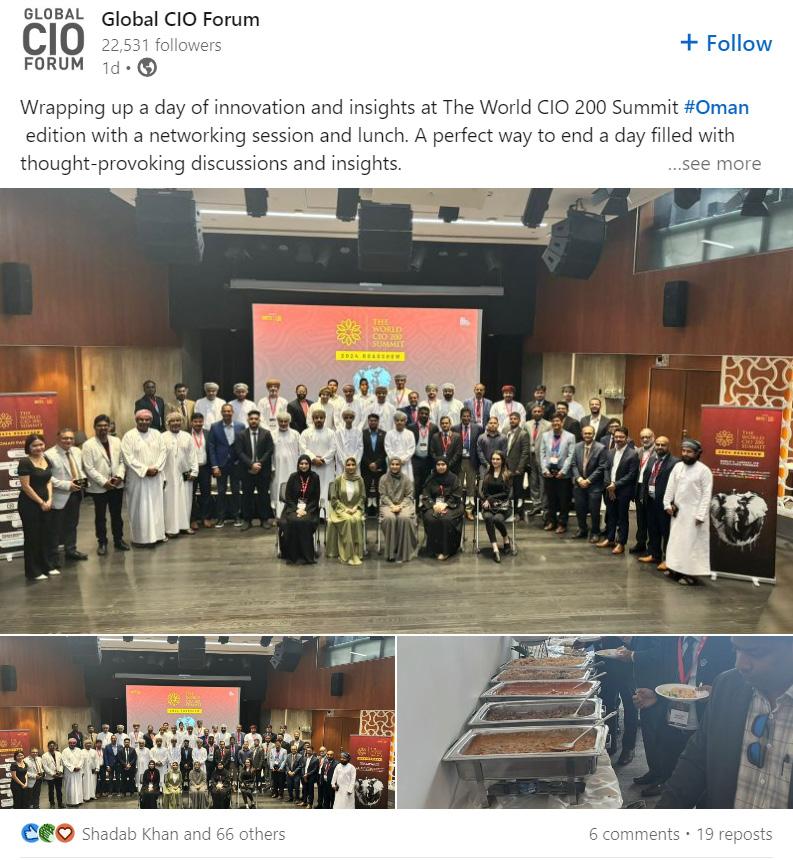




PUBLISHER
Tushar Sahoo tushar@gecmediagroup.com
CO-FOUNDER & CEO
Ronak Samantaray ronak@gecmediagroup.com
MANAGING EDITOR
Jeevan Thankappan jeevan@gecmediagroup.com
GLOBAL HEAD, CONTENT & STRATEGIC ALLIANCES
Anushree Dixit anushree@gecmediagroup.com
ASSISTANT EDITORS
Sehrish Tariq sehrish@gcemediagroup.com
GROUP SALES HEAD
Richa S richa@gecmediagroup.com
PROJECT LEAD
Jennefer Lorraine Mendoza jennefer@gecmediagroup.com
SALES AND ADVERTISING
Ronak Samantaray ronak@gecmediagroup.com
Ph: + 971 555 120 490
IT MANAGER
Vijay Bakshi
DESIGN TEAM
CREATIVE LEAD
Ajay Arya
SENIOR DESIGNER
Shadab Ali Khan
GRAPHIC DESIGNERS
Jitesh Kumar
Sejal Shukla
PRODUCTION, CIRCULATION, SUBSCRIPTIONS info@gecmediagroup.com
UAE Office No #115, 1st Floor, G2 Building, Dubai Production City,Dubai, United Arab Emirates Phone : +971 4 564 8684
USA
31 Foxtail Lan, Monmouth Junction, NJ 08852, Ph: + 1 732 794 5918
PRINTED BY
Al Ghurair Printing & Publishing LLC. Masafi Compound, Satwa, PO Box: 5613, Dubai, UAE
PUBLISHED BY
Accent Infomedia MEA FZ-LLC Office No #115, 1st Floor, G2 Building, Dubai Production City, Dubai, United Arab Emirates Phone : +971 4 564 8684
A PUBLICATION LICENSED BY INTERNATIONAL MEDIA PRODUCTION ZONE, DUBAI, UAE
@Copyright 2018 Accent Infomedia. All rights reserved.
While the publishers have made every effort to ensure the accuracy of all information in this magazine, they will not be held responsible for any errors therein.
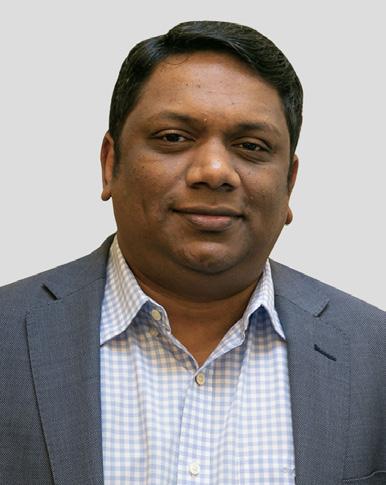
After the epoch-making COP 28 last year in Dubai, most countries in the region have taken significant steps to transition to carbonneutral economies. This is particularly evident in countries like the UAE and Saudi Arabia. Abu Dhabi’s Environment Vision 2030 and Dubai’s plan to provide 75 percent of the Emirate’s energy through clean energy sources by 2050 are well on track to meet their avowed goals. Saudi Arabia has launched a green initiative targeted at zero emissions by 2060 through the circular carbon economy approach.
While most discussions about sustainability revolve around transitioning from fossil fuels to renewable energy sources and circular economy practices, technology’s role in driving ESG goals is often glossed over. Though ESG reporting is yet to become mandatory in the region as it is in Europe, I wouldn’t be surprised if that becomes the norm shortly. For example, it is already mandated for listed companies in the UAE. Countries such as Bahrain, Oman, and Kuwait have launched voluntary sustainability disclosure guidelines to promote ESG reporting.
Now, let's address the core of the issue: What role does the CIO play in driving sustainability and ESG initiatives in their organizations? As technology becomes the backbone of business operations, the CIO has become pivotal in championing sustainability initiatives. Besides deploying green technologies, IT heads must monitor and report on key sustainability metrics such as energy usage and carbon footprint. However, many existing enterprise IT systems were not designed with ESG metrics in mind, which requires specialized capabilities for capturing. This is something that CIOs must confront address headon.
Our cover story in this issue is all about tech's increasing role in sustainability and why CIOs need to support more sustainable and responsible business practices.
Thanks for reading.
Jeevan Thankappan jeevan@gecmediagroup.com



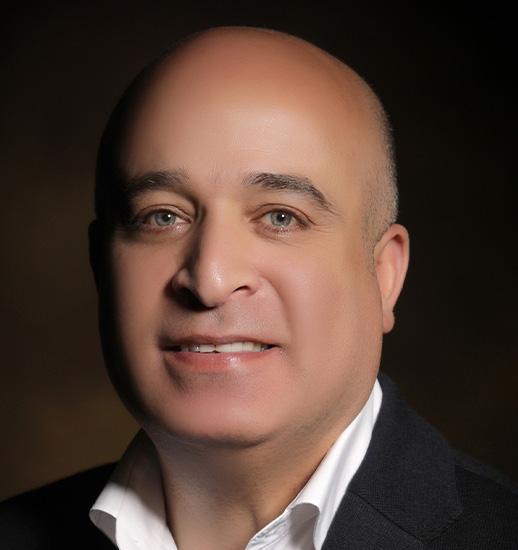
Microsoft and G42 announced a comprehensive package of digital investments in Kenya, as part of an initiative with the Republic of Kenya’s Ministry of Information, Communications and the Digital Economy.
In collaboration with Microsoft and other stakeholders, G42 will lead the arrangement of an initial investment of $1 billion for the various components outlined in the comprehensive package. One of the Kenyan investment priorities is a state-of-the-art green data center that will be built by G42 and its partners to run Microsoft Azure in a new East Africa Cloud Region.
The initiative will include four additional pillars that will be pursued with local partners:

(1) local-language AI model development and research; (2) an East Africa Innovation Lab coupled with broad AI digital skills training; (3) international and local connectivity investments; and (4) collaboration with the government of Kenya to support safe and secure cloud services across East Africa.
As part of the agreement, G42, in collaboration with local partners,
Ericsson and Vodafone Egypt announced the modernization and capacity expansion of Vodafone Egypt’s mobile network with the introduction of Ericsson’s triple-band radio, supporting Time Division Duplex (TDD) and Frequency Division Duplex (FDD) spectrum.
Radio 4466, an Ericsson Radio System product, supports Vodafone Egypt to simultaneously enable 2G, 3G, 4G as well as 5G across 1800MHz, 2100MHz, and 2600MHz spectrum layers with a single unit, lessening the number of equipment normally required. This introduction marks the first triple-band radio live on 1800MHz, 2100MHz FDD and 2600MHz TDD bands.
By consolidating three bands into the same radio, this optimized product enhances
will design and build a state-ofthe-art data center campus in Olkaria, Kenya, run entirely on renewable geothermal energy and designed with state-of-the-art water conservation technology. The data center will run on and provide access to Microsoft Azure through a new East Africa Cloud Region, which will become operational within 24 months of the signing of the definitive agreements. This cloud region will provide customers access to scalable, secure, high-speed cloud and AI services to accelerate cloud adoption and the digital transformation of businesses, customers and partners across Kenya and East Africa.
network performance while also contributing to a more sustainable network by lowering Vodafone Egypt’s network’s overall energy consumption by up to 15 percent and reducing site footprint and time to deployment. This innovative approach aims to enhance user experience, boost capacity, and pave the way for 5G readiness.
Catalin Buliga, Technology Director Vodafone Egypt, said, “We relentlessly work with all our technology partners to continuously enhance our mobile network leadership and provide world class mobile service quality to our customers. This new tripleband radio unit from Ericsson gives us better cost, faster deployment of 4G/5G services, less energy consumption for our mobile network and less tower load.”

Catalin Buliga, Technology Director Vodafone Egypt and Håkan Cervell, Vice President and Head of Ericsson Saudi Arabia and Egypt at Ericsson
Håkan Cervell, Vice President and Head of Ericsson Saudi Arabia and Egypt at Ericsson Middle East and Africa, said, “Through advanced optimization algorithms and intelligent resource allocation, we can unlock new levels of efficiency, ensuring that every bit of bandwidth is utilized to its fullest potential. As we embrace energyefficient solutions and reduce our carbon footprint, we are not only enhancing connectivity but also championing environmental stewardship.”
Swiss GRC has launched its flagship product, the GRC Toolbox, in the Middle East. Tailored to the region’s unique needs, this move is part of Swiss GRC’s strategic expansion, with a new branch and operational office in Dubai Internet City, UAE.
Swiss GRC distinguishes itself with a user-friendly interface, modular options, and the adoption of new technologies like Generative AI and advanced analytics. The local data center offers on-premise and cloud deployment options. The GRC Toolbox, fully available in Arabic, provides configurationpowered customization for quick implementation. The attractive pricing model includes unlimited user access, allowing organizations to easily scale across all three lines of defense.

To support its regional operations, Swiss GRC has invested in a local entity and local data center in the UAE, ensuring compliance with operational requirements. The GRC Toolbox, now available in Arabic with right-to-left language support, offers a fully localized experience.
This platform consolidates all GRC activities and regulatory requirements, catering specifically to the Middle East market.
Looking ahead to 2024, Swiss GRC plans significant investments in the MENA region. These include developing and launching the complete GRC Toolbox in Arabic, training channel partners, engaging in marketing initiatives, and expanding its workforce in the Dubai office.
“We are very excited to offer our services in the Middle East region,” said, Besfort Kuqi, CoFounder and CEO of Swiss GRC.
“Our solutions are tailored to this region, and the GRC Toolbox is a testament to that, being the GRC software fully in Arabic designed specifically for MENA brands.”
Oracle will expand its research and development (R&D) capabilities in Morocco by growing its local workforce to 1,000 information technology (IT) professionals. This investment will accelerate the development of Oracle’s cuttingedge technologies that help solve customer challenges worldwide.
Ghita Mezzour, Minister in charge of Digital Transition and Administration Reform of the Government of Morocco, signed an agreement with Safra Catz, CEO of Oracle, to formalize the partnership and commitment to innovation in Morocco. The ceremony was attended by Mr. Mohcine Jazouli, Minister in charge of Investment, Convergence and Evaluation of Public Policies, and Mr. Ali Seddiki, General Director of the Moroccan
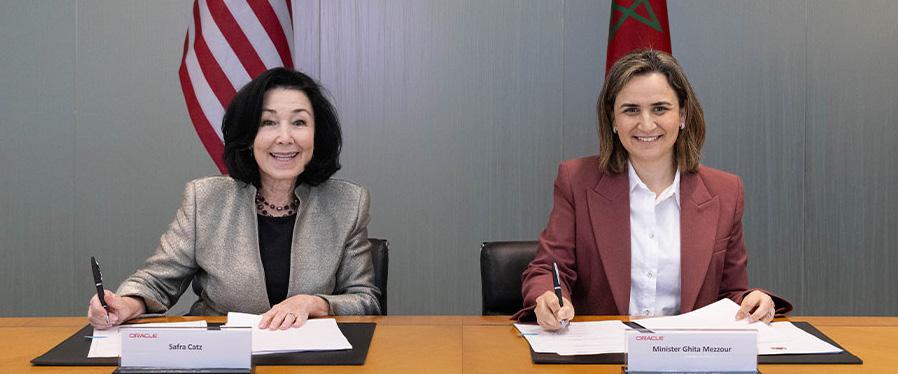
Ghita Mezzour, Minister in charge of Digital Transition and Administration Reform of the Government of Morocco and Safra Catz, CEO of Oracle.
Agency for Investment and Export Development (AMDIE).
“Oracle’s R&D center in Casablanca has already played a critical role in creating technical breakthroughs, enhancing cybersecurity, and delivering impactful new AI capabilities,” said Safra Catz, CEO of Oracle. “By expanding our R&D presence in Morocco, we can further tap its deep talent pool to accelerate development of solutions that help our global customers grow their businesses and win in their
industries.”
“This ambitious project falls within the strategic and comprehensive Royal Vision of His Majesty King Mohammed VI who called on encouraging Moroccan youth innovation and creativity,” said Ms. Ghita Mezzour, Minister in charge of Digital Transition and Administration Reform of the Government of Morocco.
“At this cutting-edge center, young Moroccans will be at the forefront of designing and developing innovative solutions, covering the latest technologies such as artificial intelligence, big data, cloud computing and cybersecurity. These solutions will be deployed on a global scale, thus strengthening Morocco’s positioning as a regional digital hub.”
The Abu Dhabi Department of Economic Development issued a new guide outlining investment opportunities with high growth potential in Abu Dhabi’s transportation industries. Released as part of the Abu Dhabi Channel Partners programme, the guide allows domestic and international players to invest in a sector projected to reach a combined market size of AED11.04 billion (USD3 billion) by 2027.
His Excellency Ahmed Jasim Al Zaabi, Chairman of the Abu Dhabi Department of Economic Development (ADDED), announced the new guide for investment opportunities in transportation at DRIFTx, the international thought-leadership and exhibition platform in Abu Dhabi that is dedicated to advancing the future
of smart and autonomous mobility across air, land, and sea. DRIFTx is supported by the Abu Dhabi Investment Office, which launched Smart and Autonomous Vehicle Industry cluster in 2023 to set new standards for global transportation and mobility.
HE Al Zaabi said: “These highgrowth investment opportunities in the transportation industries will play an important role in strengthening the Emirate’s industrial landscape. ADIS is supporting our transformation into a diversified, smart, and sustainable economy, underscoring our vision of establishing Abu Dhabi as a global technological hub and innovation centre for manufacturing.”
Industrial Investment opportunities in transportation

include the development, manufacturing and commercialisation of commercial drones, electric vehicle chargers, automotive battery systems, aircraft landing gears, e-scooters, and automotive tyres. The compound annual growth rate (CAGR) of these opportunities is projected to range between 5.7% for conventional industries, to 9.4% for high-growth ones, and up to 31.5% for disruptive industries in transportation.
ServiceNow is planning a UAE Cloud, hosted on Microsoft Azure. The company confirmed that the active build of this cloud region is underway, with a targeted launch in the first half of 2025.
The cloud offering is in line with ServiceNow’s commitment to meeting the business transformation requirements of all business entities in the UAE, both public and private sector. ServiceNow will host its UAE cloud on Azure as part of the company’s ongoing expansion of its global strategic alliance with Microsoft, which began in 2019.
“ServiceNow’s UAE Cloud will accelerate the delivery and adoption of ServiceNow’s intelligent platform for end-toend business transformation

for the UAE; particularly across government, financial services, energy, and telecom sectors. Upon launch of the UAE Cloud, our customers will be able to transform their operations and empower their employees like never before,” said Mark Ackerman, Area Vice President, Middle East and Africa at ServiceNow.
“ServiceNow’s hosting of its cloud on Azure in the UAE is a valuable step in supporting the
nation’s digital innovators and the business transformation goals of our customers,” said Ahmed Hamzawy, Global Partner Solutions Lead for Microsoft UAE.
“Our timely partnership with ServiceNow enables UAE entities to embrace digital transformation with a focus on compliance, security and agility, and we believe there has never been a more important time to optimize the strength of this integration.”
With ServiceNow’s single, trusted AI and data platform, customers can realize the full potential of AI across their business, fast. With generative AI (GenAI) embedded directly into the Now Platform, customers get outof-the-box intelligence to support their business transformation.
NTT DATA Middle East and Africa has begun deploying its Low-Earth Orbit (LEO) based connectivity services for nine key clients across sectors including retail, banking, mining, and logistics. These services aim to enhance network performance and deliver a more consistent and improved client experience.
NTT DATA’s investment into LEO satellite services aims to mitigate the frequent disruptions caused by fibre cable breaks or power disruptions (loadshedding), ensuring more reliable and continuous connection for businesses across the region. While the company has been offering satellite services for more than 10 years, an integrated GEO-LEO solution, together with established fibre and wireless alternatives, translates to enhanced
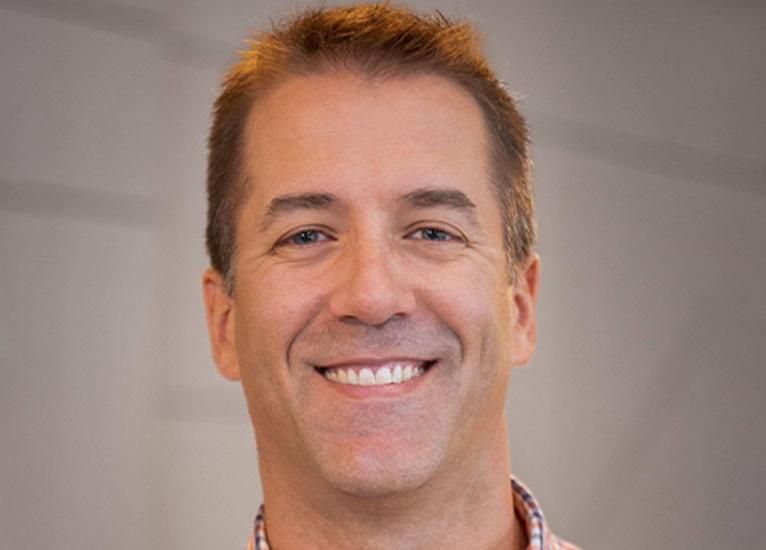
Greg Hatfield, Vice President of Infrastructure Solutions at NTT DATA
performance for multiple usecases including access to latencysensitive applications as well as real-time services such as video conferencing, among others.
Greg Hatfield, Vice President of Infrastructure Solutions at NTT DATA explains further, “Our approach is to provide LEObased connectivity solutions using industry specific full-stack architecture. This enables business transformation for our clients,
as opposed to simply connecting their locations.”
While the region is well served by traditional communications technology like fibre and wireless, there has been a resurgence in demand for satellite services, amplified by some of the unique attributes of LEO. As one of the few service providers that has expertise through the entire IT stack, NTT DATA’s LEO satellite offering simply becomes an extension of the company’s holistic approach to using technology to help their clients succeed. A vendor- and technology-agnostic approach gives clients peace of mind that they are receiving a fit-forpurpose solution, that has not only navigated country-specific complexities of regulatory obligations and risk, but coverage and solution integration as well.
Bajaj Finserv Direct has announced the launch of its Technology Services business hub in the Dubai International Financial Centre (DIFC) as part of its foray into the Middle East market.
Bajaj Finserv Direct, part of the multi-billion-dollar Indian conglomerate, the Bajaj Group, is among India’s leading digital marketplaces for financial services. Its Technology Services division, Bajaj Technology Services in the UAE, will cater to the GCC and larger regional markets in the context of a growth in digital technology spending, which is projected to reach US $20bn by 2026 in the UAE, according to a recent study done by BCG.
On the occasion of the launch, Sanjiv Bajaj, Chairman and Managing Director, Bajaj Finserv, said, “A digital revolution is
unfolding worldwide with AI and emerging technologies reshaping industries, businesses, and more so, lives. Given our strong track record of building tech-driven businesses, Bajaj Finserv is well poised to be at the forefront of digital transformation in financial services. The UAE, with its visionary leadership and new digital agenda, is the natural choice for our global debut. With the launch of Bajaj Technology Services in the UAE, we hope to enable businesses to thrive in the digital era.”
Speaking at the launch, Ashish Panchal, Chief Executive Officer, Bajaj Finserv Direct, said: “The launch of our Technology Services in GCC’s most vibrant digital and financial hub marks an exciting new chapter in the growth of Bajaj Finserv Direct.
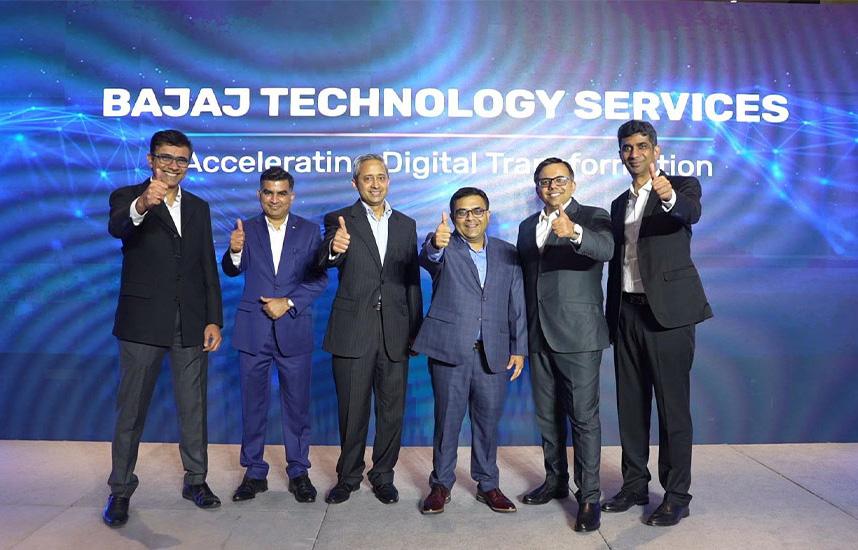
Strong capital inflows, safeharbor status, the rapid growth of entrepreneurial and startup ventures, and availability of quality talent have been boosting UAE’s economic activity. Backed by a 100-year legacy, a culture of innovation, customer centricity and proven expertise in digital transformation of businesses, Bajaj Technology Services looks to make a meaningful contribution to UAE’s ambitious Digital Economy Strategy that aims to double its digital economy’s contribution to GDP to 19.4% in 10 years.”

Worldwide end-user spending on public cloud services is forecast to grow 20.4% to total $675.4 billion in 2024, up from $561 billion in 2023, according to the latest forecast from Gartner, Inc. This growth is being driven by generative AI (GenAI) and application modernization.
“The continued growth we expect to see in public cloud spending can be largely attributed to GenAI due to the continued creation of general-purpose foundation models and the ramp up to delivering GenAI-enabled applications at scale,” said Sid Nag,
Vice President Analyst at Gartner.
“Because of this continued growth, we expect public cloud end-user spending to eclipse the one trillion dollar mark before the end of this decade.”
All segments of the cloud market are expected to see growth in 2024. Infrastructure-as-a-service (IaaS) is forecast to experience the highest end-user spending growth at 25.6%, followed by platformas-a-service (PaaS) at 20.6%.
“IaaS continues at a robust growth rate that is reflective of the GenAI revolution that is underway,” said Nag. “The need for infrastructure to undertake AI model training, inferencing and fine tuning has only been growing and will continue to grow exponentially and have a direct effect on IaaS consumption.”
While cloud infrastructure and
platform services are driving the highest spending growth, SaaS remains the largest segment of the cloud market in enduser spending. SaaS spending is projected to grow 20% to total $247.2 billion in 2024.
“SaaS spend is driven by applications being modernized by independent software vendors to run in a SaaS-based consumption model,” said Nag.
“Organizations continue to increase their usage of cloud for specific use cases such as AI, machine learning, Internet of Things and big data which is driving this SaaS growth.”
In the Middle East and North Africa (MENA) region, enduser spending on public cloud services is forecast to grow 19.8%, to total $7.3 billion in 2024.
Snowflake has achieved the Dubai Electronic Security Centre (DESC) certification, enabling the company to extend its services to all markets within the Emirate of Dubai, including government and semi-government organizations.
The DESC certification is crucial for cloud service providers operating in Dubai, ensuring they meet the stringent cybersecurity standards necessary to serve government entities. Snowflake engaged with an assigned independent third-party assessor to complete the certification assessment. This accreditation involves a rigorous audit and is essential for providers who must demonstrate compliance with both international standards, such as ISO/IEC 27001, ISO/IEC 27017,
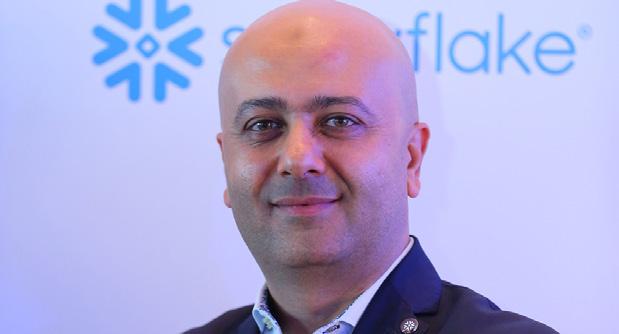
and ISO/IEC 27018, and local regulations outlined in the DESC Information Security Regulation (ISR).
With this certification in place and licensed by DESC, Snowflake is meeting the increased expectations of cloud service providers, and providing a framework for technical and governance measures to securely serve government entities in Dubai. The certification covers the company’s operations in the Azure
UAE North region. For a full list of Snowflake regions, please refer to the Supported Cloud Regions page. Mohamed Zouari, Regional Director at Snowflake, said, “As the Middle East rapidly advances its digital transformation and AI adoption, the need for reliable and secure cloud services is more critical than ever. Snowflake’s DESC certification not only underscores our dedication to meeting the highest standards of data security, but also positions us as a key player in supporting the region’s economic diversification and digital and AI strategies. This accelerates our growth and unlocks new business opportunities, while strengthening the cybersecurity posture of our services across the Middle East.”
ManageEngine has introduced SaaS Manager Plus, a comprehensive SaaS management solution designed for enterprises. This new tool integrates effortlessly with Zoho apps and other popular applications, enabling IT administrators and finance managers to optimize their SaaS ecosystems and uncover costsaving opportunities, leading to more efficient budget allocation.
Gartner projects the worldwide spending on public cloud application services (SaaS) in 2024 to be around $244 billion, representing 19% growth year over year. With organizations rapidly switching to cloud-based applications comes a massive challenge for IT teams—SaaS
sprawl. Businesses struggle to discover all the SaaS applications employees are using, manage access permissions and ensure secure usage across a geographically distributed workforce.
SaaS Manager Plus tackles these challenges head-on by providing a unified platform for SaaS management. It streamlines discovery, enforces access controls and offers valuable usage insights, allowing IT teams to gain control over their SaaS ecosystems, optimize costs and ensure data security, all while empowering a productive remote workforce.
“While multi-Cloud and multiSaaS strategies offer enormous benefits, inefficient use of

cloud resources and spiraling costs could topple business operations. A disciplined FinOps approach could help, but most organizations struggle to align it well with their management practices across IT, Finance, Operations, etc. This launch is a testament to our commitment to solving technology management problems endto-end for enterprises,” said Rajesh Ganesan, president at ManageEngine.
Moro Hub, a subsidiary of Digital DEWA, the digital arm of Dubai Electricity and Water Authority, presented a Green Certificate to Smart Salem Medical Center, a healthcare provider committed to innovation and sustainability, for its exemplary efforts in reducing carbon emissions. The Green Certificate was presented by Mohammad Bin Sulaiman, CEO of Moro Hub to Amanda Gravitis, CEO of Smart Salem Medical Centre for their commitment to sustainability through the utilization of Moro Green Cloud for their IT workloads.
Moro Green Cloud, an ecofriendly cloud solution offered by Moro Hub, is powered by renewable energy sources, ensuring minimal environmental impact. The Green Certificate Underscores Smart Salem Medical Center’s dedication to environmental responsibility and sustainability, acknowledging

its significant contribution to reducing carbon emissions.
Smart Salem provides comprehensive healthcare screening services utilising advanced automation, robotics and smart technologies to deliver a fully digital and premium customer experience, pioneering healthcare behavioral change in the region.
“We congratulate Smart Salem Medical Center on receiving the Green Certificate, which
signifies their commitment to sustainability and environmental preservation. Moro Hub is committed to supporting organizations like Smart Salem in their journey towards a greener future, and we remain dedicated to providing innovative solutions that drive sustainability and digital transformation,” said Mohammad Bin Sulaiman, CEO of Moro Hub. Moro Hub’s Green Cloud services provide environmentally friendly cloud solutions, enabling organizations to reduce their carbon footprint while benefiting from advanced digital technologies. Through its partnership with Moro Hub, Smart Salem Medical Center has not only achieved operational efficiency but has also demonstrated its dedication to corporate social responsibility and environmental stewardship.

Dell Technologies and Aramco have signed a Memorandum of Understanding (MoU) to explore opportunities in quantum computing, artificial intelligence (AI), edge computing solutions, and advanced computing architectures.
The role of technologies such as AI-enabled edge and quantum
computing can help address complex problems in areas such as energy optimization, predictive maintenance, weather modeling, and materials science. The combination of AI and edge computing, along with a robust and scalable enterprise IT infrastructure, is expected to allow businesses to optimize operations, foster real-time data processing, and enhance computational efficiencies.
The MoU underscores Aramco’s aim to drive innovation in the global energy sector and paves the way for potential collaborations that could lead to future technological advancements.
Nabil Al Nuaim, Senior Vice President of Digital and Information Technology at Aramco, said: “Technologies such as AI and quantum computing
Lenovo recently penned a Memorandum of Understanding agreement with the KAFALAH Small & Medium Enterprises Loan Guarantee Program, to help achieve their digitalization goals through tackling business challenges with smart infrastructure and technical engineering solutions.
This strategic partnership brings together the technological expertise of Lenovo and the innovative solutions of Kafalah to create a synergy that will play a pivotal role in shaping the future of finance in Saudi Arabia. The collaboration will focus on leveraging cuttingedge technologies to enhance the efficiency, security, and accessibility of financial services

across the region.
As part of the partnership, Lenovo will provide various technical solutions with a goal of sharing knowledge and experience. The partnership will see the integration of cuttingedge technologies, such as advanced data analytics, artificial
offer unparalleled processing capabilities and could be gamechangers in the energy sector. The potential is limitless, and we are excited to explore new opportunities with Dell. These opportunities could enable us to further align with our sustainability goals and help contribute to the Kingdom’s position as a technological frontrunner in the energy domain.”
Mohammed Amin, Senior Vice President, CEEMETA, Dell Technologies, said: “From optimizing energy operations to finding solutions to complex challenges, we seek to drive transformative change within the energy vertical by helping companies like Aramco adopt the latest technological advancements to stay ahead of the innovation curve.”
intelligence, and cloud computing, to streamline financial processes.
As Kafalah aims to create a more agile and responsive financial ecosystem, marking a significant leap towards a technologically advanced future for financial services in the Kingdom.
Alaa Bawab, General Manager, Lenovo Infrastructure Group, META said, “The Kingdom is currently going through a massive digitalization change, which has increased the demand for technology and innovation to set a new framework for the future. Keeping this in mind, we look forward to supporting the Kafalah Program not only with our technical services and solutions, but also being a driving force in building their future with adequate planning for tackling the AI and IoT enabled tomorrow.”
ManageEngine announced the integration of its SIEM solution, Log360, with Constella Intelligence, a digital risk protection platform, in a move that equips organizations with a critical first line of defense against supply chain attacks.
Gartner projects that 45% of organizations worldwide will experience a supply chain attack by 2025. By enabling proactive monitoring of both the deep and dark web for leaked credentials with this integration, Log360 empowers businesses to take immediate action and prevent cyberattacks, thereby safeguarding critical data and minimizing operational disruptions.
Kevin Senator, CEO at Constella Intelligence, said, “Today’s interconnected business landscape
demands proactive measures against the looming threat of supply chain attacks. With this integration, we are equipping organizations with a crucial first line of defense. By relentlessly hunting leaked credentials, we empower businesses to stay ahead of cyberthreats and safeguard their critical data and operations.”
According to Manikandan Thangaraj, vice president at ManageEngine, this integration acts as a force multiplier, empowering lean security teams in a climate of limited cybersecurity expertise.
“The cybercrime landscape is relentless, and skilled defenders are scarce. At ManageEngine, we have been deeply focused on strengthening the capabilities of our security suite of products,
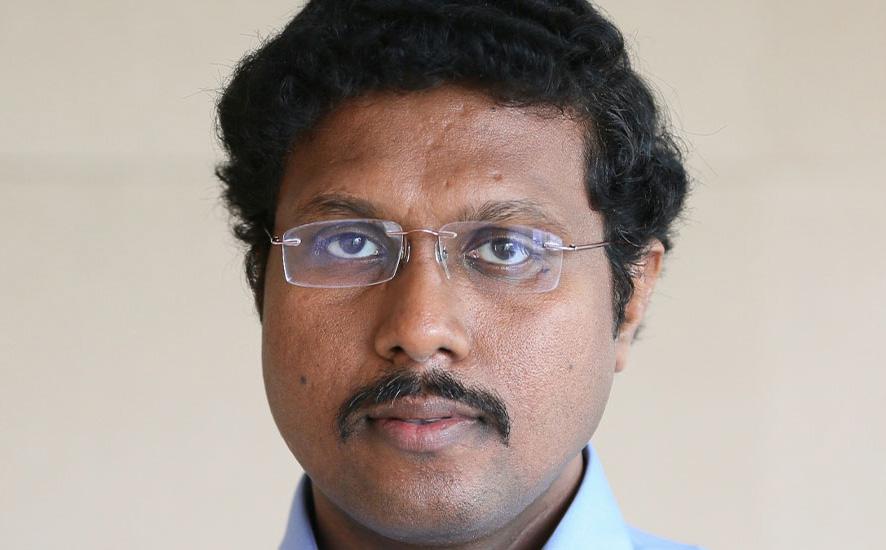
specifically Log360’s threat detection, investigation and response (TDIR) module, to address these market challenges. Our latest addition—the integration with Constella Intelligence— shortens threat detection time by proactively uncovering leaks on the dark web. This integration empowers security operations centers to act faster, even with limited resources, and neutralize threats before they strike,” said Thangaraj.
Building on their ecosystem partnership of more than 30 years, Accenture and Oracle are investing in new generative AI solutions, tools, and trainings to help organizations maximize the value of their data to drive nextlevel growth and continuous innovation.
Together, Accenture and Oracle will help clients across industries reinvent their businesses with generative AI, moving from experimentation to adoption at scale. The companies will leverage Oracle Cloud Infrastructure (OCI) Generative AI to help increase efficiency, improve resilience, and deliver superior customer and employee experiences, while keeping client’s data private and secure. With an initial focus on driving digital finance transformation across industries,

new generative AI-powered OCI solutions can provide finance teams with real-time data analysis and recommendations, transforming how decisions are made.
“Our clients are laser-focused on moving beyond generative AI experimentation to value realization. In fact, according to new Accenture research, 85% of
C-suite leaders are confident they will achieve the expected ROI on their generative AI investments this year,” said Lan Guan, chief AI officer, Accenture. “Together with Oracle, we’re delivering the enterprise-grade generative AI solutions organizations need to drive new value and completely reimagine business functions and processes.”
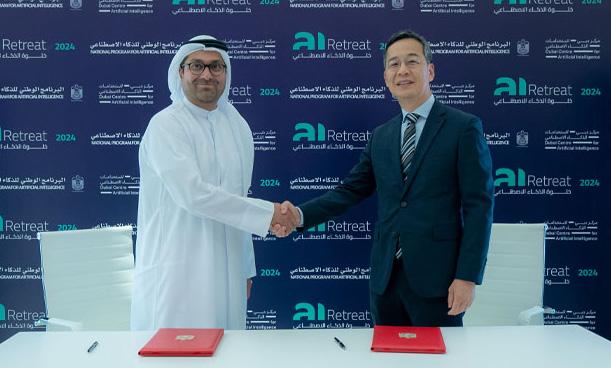
The UAE’s Artificial Intelligence, Digital Economy, and Remote Work Applications Office and Samsung Gulf Electronics have signed a Memorandum of Understanding (MOU) to collaborate on driving artificial intelligence adoption and development in the UAE.
The signing of the Memorandum of Understanding came as part of the efforts of the Artificial Intelligence, Digital Economy, and Remote Work Applications Office to achieve the targets of the UAE’s Artificial Intelligence Strategy and its
ambitious goals to establish the UAE’s global leadership in the field of artificial intelligence by 2031. It also aligns with Samsung’s objectives and efforts in this field, through joint work to use the capabilities of artificial intelligence to enhance economic growth, contribute to sustainable development, and improve the well-being of life in communities.
Saqr binghalib, the Executive Director of the UAE’s Artificial Intelligence, Digital Economy, and Remote Work Applications Office, and DooHee Lee, President of Samsung Gulf Electornics, signed a Memorandum of Understanding during the activities of the “AI Retreat 2024,” organized recently by Dubai Center for Artificial Intelligence (DCAI)
in collaboration with the National Program for Artificial Intelligence.
Saqr binghalib affirmed that expanding partnerships between the government and the private sector represents an important factor in achieving the visions and directions of the UAE government. This aims to solidify the UAE’s position as a leading global destination in the field of artificial intelligence. By accelerating the growth of the AI ecosystem to reach global levels through the integration of leading technical expertise with AI and technological expertise worldwide, we can achieve our national strategies and program objectives. This also contributes to building future competencies and empowering the next generation of AI pioneers.
VAST Data has announced a strategic partnership with Northern Data Group’s GenAI cloud platform, Taiga Cloud, a leading generative AI cloud service provider in Europe. This collaboration will deliver dedicated, scalable generative AI cloud services across Europe, all powered by 100% carbonfree energy.
Gartner predicts that by 2030, AI could consume up to 3.5 percent of the world’s electricity. To meet this growing demand, organizations are seeking sustainable and energy-efficient AI solutions. Taiga Cloud, a Cloud partner in the NVIDIA Partner Network,

provides access to a large NVIDIA GPU network in Europe, with over 20,000 NVIDIA GPUs, including the latest NVIDIA H100 and A100 Tensor Core GPUs. Its platform runs entirely on carbon-free, renewable energy, and boasts a less than 1.2 Power Usage Effectiveness ratio.
Combining this efficiency with VAST’s differentiated
Disaggregated Shared Everything (DASE) architecture and Similarity data reduction software will provide access to a high-speed, low-latency and data-sovereign cloud built for accelerated computing, while ensuring organizations aren’t compromising on their sustainability objectives.
“Northern Data Group is committed to providing best-inclass solutions driven by energy from renewable sources,” said Aroosh Thillainathan, Founder and CEO, Northern Data Group. “This partnership with VAST Data is doing just this, helping to bring scalable, sustainable solutions to customers, enabling them to bring their best ideas to life.”
Cisco has unveiled the first of its innovative integrations with Splunk, a Cisco company, as the organizations combine their market-leading observability technologies to accelerate fullstack observability for the entire enterprise, helping customers deliver more performant and secure digital experiences. Through the fullstack observability journey, organizations can unlock unified visibility across any environment (on-premises, hybrid and multi cloud) and any stack while harnessing powerful real-time analytics for faster, more accurate detection, investigation and response.
Building on the recent landmark acquisition, Cisco and Spunk announced new integrations including a unified observability experience for joint customers, and the introduction of Splunk Log Observer Connect for Cisco AppDynamics and Cisco AppDynamics integration with Splunk IT Service Intelligence (ITSI). Now with Cisco’s unparalleled visibility into the network and any environment, coupled with Splunk’s industry-defining log analytics and cloud native observability capabilities, customers can instrument their entire business and reduce blind spots.
New full-stack observability innovations were also announced, including a new AI Assistant for AppDynamics which delivers meaningful guidance and insights, and empowers users to make informed decisions faster and more accurately than ever before, as well as expanded AppDynamics Softwareas-a-Service (SaaS) hosting on Microsoft Azure. In addition, new Advanced AI in Splunk IT Service Intelligence (ITSI) was unveiled, which leverages advanced AI and machine learning capabilities to provide IT teams more precise alerting and a more accurate view into IT health.
Through Cisco and Splunk’s new integrations and innovations, customers gain unified visibility across their entire digital footprint, including both owned and unowned networks. The observability
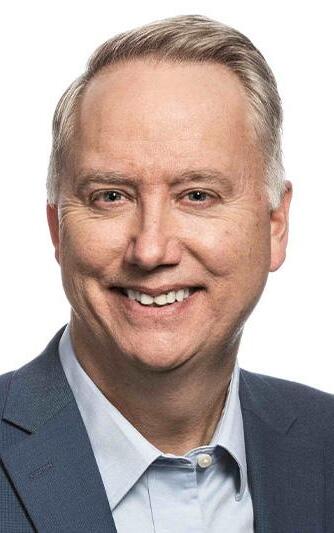
experience helps meet customers’ unique IT environment needs by providing support for on-premises, hybrid and multi cloud environments.
“By bringing together Splunk and Cisco observability solutions, customers now have unified visibility across their entire digital footprint so they can detect, investigate and resolve problems faster to create a reliable, resilient experience for their users,” said Tom Casey, SVP and GM, Products & Technology, Splunk. “Having full control over their data helps them make more targeted, effective and smarter investments in their digital systems and services, allowing them to better leverage their entire digital footprint to attract more business and grow the company.”
Fortinet announced its commitment to responsible transparency by signing the Cybersecurity and Infrastructure Security Agency’s (CISA) Secure by Design pledge. This voluntary pledge enhances Fortinet’s existing software security practices, aligning with standards from CISA, NIST, and other agencies. The pledge includes seven goals, such as responsible vulnerability disclosure, which Fortinet already integrates into its product security development.
Jim Richberg, Head of Cyber Policy and Global Field CISO at Fortinet, said, “At Fortinet, we have a long-standing commitment to being a role model in ethical and responsible product development and vulnerability disclosure. As part of this dedication, Fortinet has proactively aligned to international and industry best practices and upholds the highest security standards in every aspect of our business.”
CISA’s latest initiative strongly aligns to Fortinet’s existing product development processes already based on Secure by Design and Secure by Default principles. Fortinet is committed to adhering to robust product security scrutiny at all stages of the product development lifecycle, helping to ensure that security is designed into each product from inception all the way through to end of life, in the following ways:
• Secure Product Development Lifecycle (SPDLC): Fortinet aligns its processes in accordance with leading standards, including NIST 800-53, NIST 800-161, NIST 800-218, US EO 14028, and UK Telecom Security Act.
• Robust Security Product Testing: Fortinet leverages tools and techniques such as static application security testing (SAST) and software composition analysis built into its build processes, dynamic application security testing (DAST), vulnerability scanning, and fuzzing prior to each release, as well as penetration testing and manual code audits.
• Trusted Supplier Program: To ensure rigorous selection and qualification of its major manufacturing partners, Fortinet adheres to NIST 800-161: Cybersecurity Supply Chain Risk Management Practices for Systems and

Organizations. Fortinet’s commitment to data privacy and security is embedded in every part of the company’s business and in every phase of the product development, manufacturing, and delivery processes.
• Information Security Program: The Fortinet Information Security Program is based on and aligned with industry-leading security standards and frameworks including ISO 27001/2, ISO 27017 and 27018, and NIST 800-53, as well as data privacy regulations such as GDPR and CCPA.
• Third-Party Certifications: Fortinet products are regularly certified to standard and validated through third-party product quality standards, including NIST FIPS 140-2 and NIAP Common Criteria NDcPP / EAL4+.
Additionally, the Fortinet Product Security Incident Response Team (PSIRT) is responsible for maintaining security standards for Fortinet products and operates one of the industry’s most robust PSIRT programs, including proactively and transparently disclosing vulnerabilities. Nearly 80% of Fortinet vulnerabilities discovered in 2023 were identified internally through the company’s rigorous auditing process. This proactive approach enables fixes to be developed and implemented before malicious exploitation can occur. Fortinet works with its customers, independent security researchers, consultants, industry organizations, and other vendors to accomplish the company’s PSIRT mission.
Tenable introduced that Tenable Cloud Security and Tenable Vulnerability Management are now available through AWS Abu Dhabi Region. Tenable Cloud Security helps reduce cyber risk to cloud infrastructure and comply with data residency requirements, while Tenable Vulnerability Management prioritizes vulnerability fixes. This marks a significant milestone for cloud security in the region.
The Middle East, particularly the United Arab Emirates and Saudi Arabia, is witnessing rapid adoption of cloud technologies, driven by a cloud-first vision. A recent report from McKinsey & Company suggests that cloud services could deliver as much as $183 billion in value by 2030, generated from creating and scaling new products. However, cyber risk concerns have also increased due to the modern attack surface beyond traditional infrastructures.
Tenable Cloud Security delivers immediate value as an exceptionally user-friendly Cloud-Native Application Protection Platform (CNAPP) solution to secure AWS and multicloud environments. Tenable simplifies cloud complexity through precise contextual analysis, which enables teams to quickly identify and address accurately prioritized security gaps. As a leader in securing cloud identities, Tenable also helps achieve leastprivilege access to workloads and advance a zero trust initiative. The solution accelerates the adoption of DevSecOps through accurate security findings and detailed remediation steps that developers trust. The solution adapts to regional differences in data residency requirements.
Managed in the cloud and powered by Tenable Nessus, Tenable Vulnerability Management provides the industry’s most comprehensive vulnerability coverage with real-time continuous assessment. Built-in prioritization, threat intelligence and realtime insight help organizations understand their exposures and proactively prioritize remediations.
Maher Jadallah, Senior Director Middle East & North Africa, Tenable, said, “With AWS

access to Tenable Cloud Security and Tenable Vulnerability Management, companies can understand how cyber criminals could infiltrate their infrastructures and take proactive measures to prevent incursions. Only those who understand the attackers’ approach will be able to develop well-founded security programs – and prioritize their measures so that the most dangerous threats and attack paths are addressed first.”
Tenable Cloud Security and Tenable Vulnerability Management are available as standalone solutions or as part of the Tenable One Exposure Management Platform. Tenable One is the first and only exposure management platform that provides holistic visibility across IT and OT environments spanning IT assets, cloud resources, containers, web apps, identity systems, OT and IoT assets.
AVEVA launched its 2023 Sustainability Progress Report and the first edition of the AVEVA Industrial Intelligence Index at London Tech Week 2024. The company advocates for ethical and impact-driven AI that increases creativity and efficiency for a more sustainable world.
In 2023, AVEVA continued to make progress on its core ESG framework objectives, including enabling the sustainable transformation of industry through its software, modelling environmental stewardship and ethical best practices, and fostering an inclusive workplace culture where every employee feels engaged and empowered to learn and grow.
This fourth edition of the report is AVEVA’s first publication of ESG data and workstream advancements aligned to a calendar year reporting period. It details progress made in 2023 against three key pillars: Technology handprint, Operational footprint, and Inclusive culture.
“Beyond our efforts to reduce our own carbon footprint, we recognize that our biggest opportunity to make a positive impact and accelerate our journey towards Net Zero is through our core products, digital solutions that can help industries improve efficiency, circularity, traceability and resilience” shared Lisa Wee, Global Head of Sustainability, AVEVA.
In this regard, the company has developed a green new logo program that has supported in the first six months the deployment of clean tech activities for 25 customers. In addition, with 13 new case studies quantifying the reduction of emissions AVEVA software enables for customers, the company demonstrates how it walks the talk through tangible achievements contributing to sustainability. Last but not least, hackathons run in 2023 generated 80 sustainability-led technology ideas for future innovations.
In 2023, AVEVA met 4 out of 15 2025 ESG targets, including achieving a 93% reduction in scope 1 and scope 2 emissions through a combination of measures: the company procured 100% of renewable electricity in all

global markets as per RE100 criteria, reduced its overall fleet by 21% over the year, with25% of the remaining fleet being hybrid or electric. Notable achievements related to upstream emissions include a 36% decrease in purchased goods and services and a 49% decrease in business travel emissions. The latter goes beyond AVEVA’s 2025 ESG goal of a 20% reduction and the company has launched an internal carbon budget to maintain this level of reduction where possible.
Also, regarding scope 3, AVEVA has integrated e-waste data in the company’s emissions inventory under the waste category, and R&D teams completed power bench testing for the most energy-intensive AVEVA products, allowing for more accurate emissions calculations. AVEVA also made strides in advancing circularity across the business.
“Our initial target of diverting 5 tons of e-waste from landfill in 2025 was surpassed by 22.75 tons in 2023. We are evaluating how best to build on this achievement to drive greater awareness and alignment with circular economy principles100% of e-waste sent to our disposal partner is now diverted from landfill,” explained Lisa Wee.
At RSA 2024, SentinelOne has introduced new features in its Singularity Platform to democratize advanced cybersecurity operations. These capabilities aim to make top-tier Security Operations Centers (SOC) accessible to companies of all sizes.
“Imagine a future where security solutions not only help enterprises respond to threats, but anticipate and mitigate them before they lead to a security incident. This is the future we are creating at SentinelOne,” said Tomer Weingarten, CEO of SentinelOne.”
SentinelOne is democratizing cybersecurity through AI and automation, enabling every enterprise to operate at the same scale, speed and sophistication, regardless of budgets and resources. When combined with the visibility of the Singularity Platform and the breadth and scale of the Singularity Data Lake, Purple AI provides an always-on, expert analyst to augment the skills of any security team and supercharge their capabilities.
“It’s no secret that security teams are overwhelmed with data, alerts and laborintensive triage,” said Ric Smith, Chief Product and Technology Officer, SentinelOne. “Purple AI doesn’t just do what you ask it to, it does what you need it to.”
At RSA 2024, SentinelOne introduced new features in its Singularity Platform to democratize advanced cybersecurity operations. These capabilities aim to make top-tier Security Operations Centers (SOC) accessible to companies of all sizes.
“Imagine a future where security solutions not only help enterprises respond to threats, but anticipate and mitigate them before they lead to a security incident. This is the future we are creating at SentinelOne,” said Tomer Weingarten, CEO of SentinelOne.”
Beyond a chatbot or virtual assistant, Purple AI is an advanced AI security solution that not only creates complex data queries from natural language, but anticipates what security analysts need to do and recommends next steps. Key features demonstrated and in use today include:
• AI-powered anomaly detection: Purple AI surfaces correlated risks from integrated log sources.
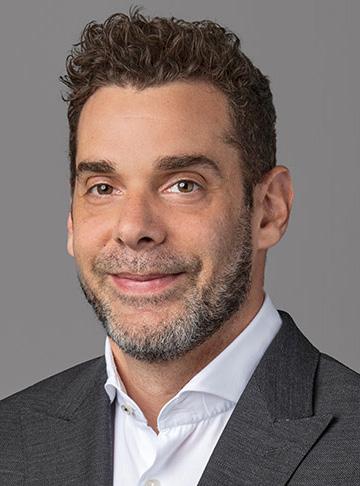
• Automated alert triage: The technology analyzes trillions of anonymized data signals at a global scale to evaluate how security analysts assess and respond to similar alerts and provides automated verdicts and recommended actions.
• AI-powered response recommendations and hyper automation rules: Using global similarity analyses, Purple AI provides intelligent response recommendations based on how others have responded to similar alerts and smart recommendations to turn those actions into hyper automation rules to put response actions in autonomous mode.
• 24/7 Auto-investigations: Through zerotouch auto-investigation capabilities, Purple AI eliminates the need for human-driven investigations and empowers security teams to focus on validating and mitigating threats at scale.
All current and future Purple AI capabilities are deeply embedded across the Singularity Platform and accessible via a new unified security console, the Singularity Operations Center
Hewlett Packard Enterprise introduced HPE Aruba Networking Enterprise Private 5G to help customers accelerate and simplify the deployment and management of private 5G networks, providing high levels of reliable wireless coverage across large campus and industrial environments and opening up new, untapped use cases for private cellular.
With this expansion of its secure edge-to-cloud portfolio, HPE Aruba Networking becomes the only global enterprise infrastructure vendor to provide comprehensive Wi-Fi and private 5G solutions, helping customers in industries such as manufacturing, healthcare, public venues, and education solve complex connectivity challenges across large and remote sites. HPE Aruba Networking Enterprise Private 5G also helps customers make productivity and innovation gains as a complement to the cost-effective, highcapacity connectivity provided by Wi-Fi, in addition to expanding AI data capture and delivery capabilities for building AI data lakes and activating inference solutions.
“Enterprise and industrial customers are increasingly seeking to deliver wireless coverage in demanding environments, including large outdoor areas, serving fastmoving clients, and providing deterministic access in dedicated spectrum,” said Stuart Strickland, wireless chief technology officer, HPE Aruba Networking. “The complexity of conventional approaches to private cellular networks has held them back. Building on HPE Aruba Networking’s history of wireless innovation and leadership, we have uniquely positioned ourselves to enable new applications for private cellular by integrating Athonet core cellular solutions with our traditional strengths in enterprise networking.”
HPE Aruba Networking Enterprise Private 5G also enables communications service providers (CSPs) to quickly deploy private 5G networks for their customers. This integrated private 5G solution complements existing WiFi-based managed services and will help telco
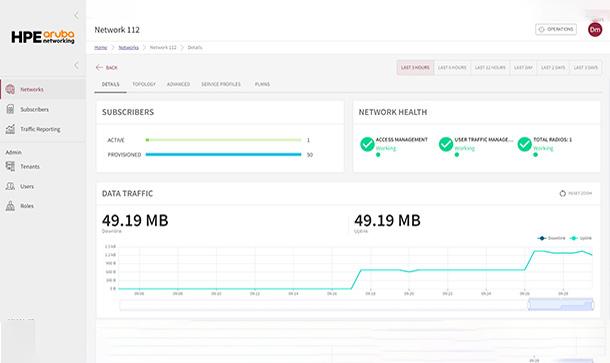
customers service the growing private cellular market and generate new revenue from their existing enterprise customers.
With the debut of HPE Aruba Networking Enterprise Private 5G, enterprises can increase reliable, secure, high-performance connectivity with a fully integrated private 5G network that features:
• An end-to-end offering that includes a 4G/5G core, HPE ProLiant Gen11 servers, SIM/eSIM cards, 4G/5G small cells, and dashboard.
• New 4G/5G small cell radios from HPE that provide indoor/outdoor coverage, eliminating the need to integrate and use a separate management tool from a 3rd party vendor.
• Simplified cloud-native management and automation for subscriber management, deployment management, core monitoring and radio monitoring, with future plans for integration with HPE Aruba Networking Central.
• Expanded AI data capture and delivery for building AI data lakes and activating inference solutions.
• Interoperability with shared spectrum for private enterprise use: CBRS spectrum in the US, and globally, where regulatory frameworks allow, beginning in 2025.
• Simplified configuration with preintegrated, tested solution including everything needed to deploy an enterprise private 4G/5G network.
• Ability to deploy solutions in under 30 minutes with zero touch provisioning and configuration wizards that mask the 3GPP cellular complexity.

The UAE-based Polynome Group has announced a $100 million fund for AI startup companies starting in the first quarter of 2025. The aim is to invest in startups in technology, AI software applications, and robotics, in line with mutual goals to expand the adoption of AI and digital technologies.
The announcement was made during the AI retreat organized by the Dubai Center for AI Applications in collaboration with the National Program for Artificial Intelligence. This event is the largest of its kind, aimed at accelerating the adoption and use of AI applications, and is attended by 1,000 decision-makers, experts, and officials from both the government and private sectors.
Polynome Group has secured in-principle approval from the Dubai International Financial Centre (DIFC) and Dubai Financial Services Authority (DFSA) to launch its AI fund in 2025, following the regulators’ review and conditional endorsement of
Dubai Municipality launched its ‘Artificial Intelligence Roadmap’ as part of the Dubai Universal Blueprint for Artificial Intelligence launched by His Highness Sheikh Hamdan bin Mohammed bin Rashid Al Maktoum, Crown Prince of Dubai and Chairman of The Executive Council of Dubai, to boost the adoption of AI by attracting top AI companies and international talent, ultimately contributing to enhancing the overall quality of life in the emirate. The new roadmap focuses on using cutting-edge technologies in qualitative and strategic projects linked to various key activities of the municipality.
The municipality unveiled its new roadmap during its participation in ‘AI Retreat 2024’, an event organised by the Dubai Centre for Artificial Intelligence in collaboration
the proposed fund structure and investment strategy. The fund has a unique “Founders for Founders” concept, as the Polynome team themselves are entrepreneurs with successful experience creating and exiting AI startups.
“Our mission is to increase the technology contribution to the UAE’s GDP, build a national tech hub and community, attract top international talent, and make the UAE a leader in AI research and innovation,” said Alexander Khanin, CEO and founder of the Polynome Group. The fund will invest in seed, Series A, and growth-stage startups with an initial investment ranging from $500,000 to $5 million per company.
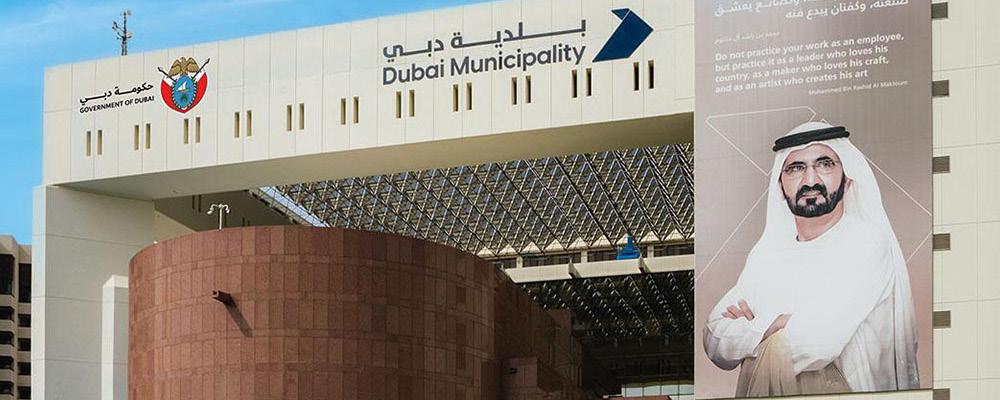
with the National Program for Artificial Intelligence.
His Excellency Dawoud Al Hajri, Director General of Dubai Municipality, said that the AI Retreat 2024 reflects His Highness Sheikh Hamdan’s directives to boost Dubai’s competitiveness and leadership as a preferred global destination for futuristic technologies.
HE Al Hajri said: “The launch of the ‘Artificial Intelligence Roadmap’ marks a vital step to recognise the possible uses of AI in municipal works and to
ensure a transformative future that elevates Dubai’s status as a pioneering global city in future innovations. Furthermore, it supports the goals of the Dubai Economic Agenda D33 focusing on consolidating Dubai’s position among the top three economic cities globally, boosting the productivity of the economy by 50 percent by innovating and adopting cutting-edge digital solutions and contributing AED 100 billion annually to Dubai’s economy from digital transformation efforts.”

The Technology Innovation Institute (TII), a global scientific research centre and the applied research pillar of Abu Dhabi’s Advanced Technology Research Council (ATRC), has launched the second iteration of its large language model (LLM), Falcon 2 11B.
Falcon 2 comprises two versions, Falcon 2 11B, a more efficient and accessible LLM trained on 5.5 trillion tokens with 11 billion parameters, and Falcon 2 11B VLM, distinguished by its vision-to-language model (VLM)
capabilities, which enables the conversion of visual inputs into textual outputs. While both models are multilingual, notably, Falcon 2 11B VLM stands out as TII’s first multimodal model and the only model currently in the toptier market with image-to-text conversion capability, marking a significant advancement in AI innovation.
Tested against several prominent AI models in its class among pre-trained models, Falcon 2 11B surpasses the performance of Meta’s newly launched Llama 3 with 8 billion parameters (8B), and performs on par with Google’s Gemma 7B at first place (Falcon 2 11B: 64.28 vs Gemma 7B: 64.29), as independently verified by Hugging Face, a US-based platform hosting an objective evaluation tool and
global leaderboard for open LLMs. More importantly, Falcon 2 11B and 11B VLM are both open-source, empowering developers worldwide with unrestricted access. In the future, plans are underway to broaden the Falcon 2 nextgeneration models, introducing a range of sizes. These models will be further enhanced with advanced machine learning capabilities like Mixture of Experts (MoE), aimed at pushing their performance to even more sophisticated levels.
All of TII’s AI models released to date have consistently ranked in the top tier globally, as the most powerful open-source LLMs. The new scaled-down and versatile Falcon 2 11B models are set to give TII greater market adoption in the ever-evolving world of generative AI.
SolarWinds has introduced SolarWinds AI to revolutionize IT operations and empower tech professionals to manage the intricacies of modern digital environments. Developed with the newly revealed AI by Design framework, this specialized generative AI engine emphasizes privacy, security, and reliability in advancing cutting-edge AI technologies.
SolarWinds AI is first being introduced in SolarWinds Service Desk, the company’s IT service management (ITSM) solution for improving IT outcomes, service delivery, and employee satisfaction. SolarWinds AI powers a transformative new generative AI feature in Service Desk, designed to supercharge agent workflows and facilitate empowered, highperforming IT teams to resolve
tickets in minutes rather than hours or days. This accelerated remediation process helps create a world-class experience for employees across the organization by minimizing downtime and outages.
Powered by large language models (LLMs) and proprietary algorithms, SolarWinds AI in Service Desk instantly summarizes complex ticket histories, provides suggested agent responses to inquiries, and generates realtime recommended steps for resolving issues. The company also plans to introduce SolarWinds AI throughout its suite of observability and IT management solutions, adding a new digital partner for DevOps, SecOps, database teams, and beyond.
“In creating SolarWinds AI, we leveraged our long history of
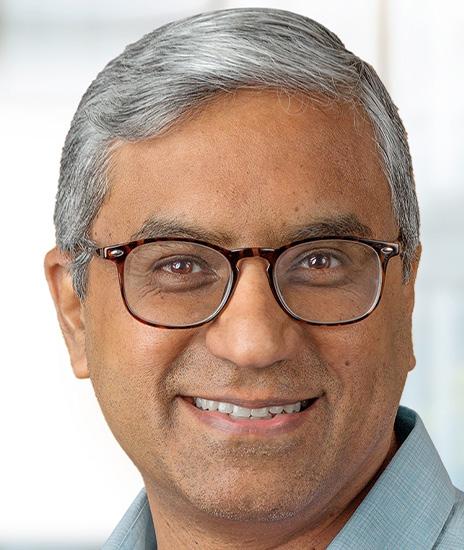
engaging with the IT community to build an AI system that could act as a valued partner to IT pros in their everyday lives and reimagine the productivity, efficiency, and innovation they’re capable of,” said, Krishna Sai, SVP of Engineering at SolarWinds.

M42 has launched the next generation of its open-access generative AI Clinical Large Language Model (LLM), Med42, during Abu Dhabi Global Healthcare Week. Building upon the success of the initial launch, Med42 represents the next evolution in AI-driven health innovation, poised to advance healthcare AI and transform patient care, while helping reduce administrative burden for
Salesforce showcased the transformative power of its latest AI and cloud-based solutions to more than 2,000 customers, partners, and associates at Salesforce World Tour Essentials Dubai.
The event also drew attention to the vital role played by technology – particularly by Salesforce’s wider ecosystem – in creating a pipeline of tech talent that provides valuable employment opportunities while driving AI and digital transformation in the region. The event was supported by 49 partner sponsors, featured more than 50 sessions by more than 20 guest speakers.
IDC estimates that Salesforce and its partner ecosystem, fueled by AI-powered cloud solutions, will generate $5.1 billion in net new business between 2022 and 2028. The report estimates a net gain of
clinicians.
M42 unveiled Med42 in October 2023. It aims to set a new standard for accuracy, efficiency, and accessibility in healthcare AI. With a score of 72 percent on the United States Medical Licensing Examination (USMLE) Sample Exam questions, the initial release outperformed OpenAI’s GPT3.5 and Google’s MedPaLM models. The model has over 8,200 downloads to date from independent developers who have tested and validated its performance. It continues to attract attention and acclaim worldwide.
This second iteration is a fully optimised 70-billion parameter finetuned model based on
Llama-3, Meta’s latest version of open-access LLMs. The new model’s performance is on par with proprietary (closed) models such as OpenAI’s GPT4 and Google’s Med-Gemini, with a zero-shot accuracy score of 85.1 per cent and a maximum accuracy score of 87.3 per cent using specialised prompting on the USMLE. This highlights Med42’s efficiency and accessibility compared to larger, closed models and solidifies its position as a frontrunner in open-access clinical LLM technology.
Med42 is accessible through the HuggingFace platform, enabling extensive testing, contribution, review, and assessment by the global scientific and developer community.
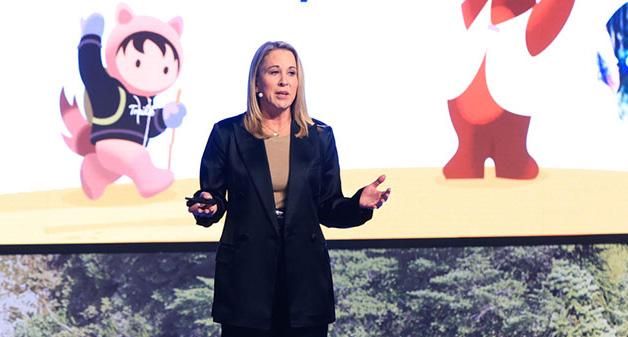
21,800 jobs through AI-powered cloud solutions in the United Arab Emirates by 2028*.
The Salesforce ecosystem of partners in the Middle East has grown 29% in FY24 but the more significant improvement is in the area of certifications with an increase of 35% in total and 29% more consultants. These partners are helping organizations across all sectors to raise employee productivity and transform with real-time insights and new levels
of customer experience.
“Every CEO I speak to knows they need to make major investments in AI to fuel growth and strengthen customer relationships. At Salesforce, we’re excited by the strides our customers and partners in the Middle East are taking to succeed in the AI era. World Tour Essentials Dubai offers the perfect showcase of the region’s potential as a center of innovation,” said Lori Steele, President and CRO, Salesforce EMEA.

Riverbed has launched an advanced AI-powered observability platform to enhance digital experiences. This platform includes new solutions and a unified agent, all built on an open architecture. The observability capabilities now cover public cloud, Zero Trust, SD-WAN architectures, and remote work environments. Aternity Mobile allows monitoring of enterpriseowned Apple iOS and Android mobile device performance,
aiding in identifying and addressing digital experience issues. Riverbed IQ 2.0, the nextgeneration AIOps service, reduces alert fatigue and uses AI-driven correlation and automation to solve issues faster.
Dave Donatelli, Chief Executive Officer at Riverbed, said, “To address this, Riverbed has invested in our core competencies of data collection and AI, and today we’re launching the most advanced AIpowered observability platform to optimize digital experiences, along with solutions that provide new levels of visibility into network blind spots and enterprise-owned mobile devices. This is Riverbed’s largest product launch in years, and all of these solutions are available now.”
Riverbed Platform – AI-Powered Observability to Optimize Digital
The new Riverbed Platform is open, simple, and smart, enabling IT organizations to collect, analyze and automate, and report on data, in order to deliver optimized digital experiences. The Riverbed Platform collects fullfidelity data spanning networks, IT infrastructure, applications, user experience, endpoints, and cloud; and as an open platform, is launching with approximately 35 pre-built application and software integrations. The Riverbed Platform applies the data, including third parties, into an AIOps engine for analysis and correlation, where root cause identification is determined, and automated remediations are launched. Reporting occurs using Riverbed dashboards, or through integration with IT Services Management tools such as ServiceNow.
Amazon Web Services has announced a $230 million commitment for startups around the world to accelerate the creation of generative AI applications. This will provide startups, especially early-stage companies, with AWS credits, mentorship, and education to further their use of artificial intelligence (AI) and machine learning (ML) technologies. Part of the new commitment will fund the second cohort of the AWS Generative AI Accelerator, a program that provides hands-on expertise and up to $1 million in credits to each of the top 80 earlystage startups that are using generative AI to solve complex challenges. Applications for the AWS Generative AI Accelerator open today and will be accepted

until July 19.
“For more than 18 years, AWS has helped more startups to build, launch, and scale their business than any other cloud provider— it’s no coincidence that 96% of all AI/ML unicorns run on AWS,” said, Matt Wood, vice president, Artificial Intelligence Products at AWS
Interested startups can learn more about how to access these funds here. Startups can use AWS credits to access AWS
compute, storage, and database technologies, as well as AWS Trainium and AWS Inferentia2, energy-efficient AI chips that offer high performance at the lowest cost. These credits can also be used on Amazon SageMaker, a fully managed service that helps companies build and train their own FMs, as well as to access models and tools to easily and securely build generative AI applications through Amazon Bedrock.
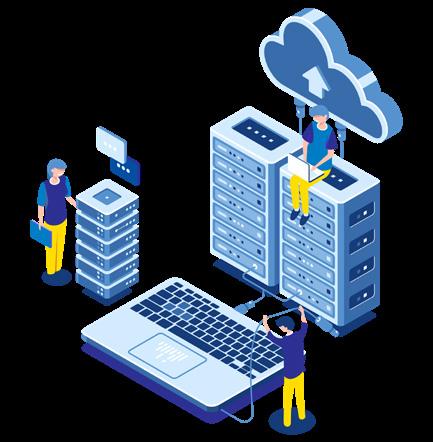
Streamline their IT infrastructure and improve operational efficiency, which can result in lower costs and increased productivity.

Assess your current capabilities architecture and identify areas for improvement, helping you to make informed decisions about where to invest your technology resources
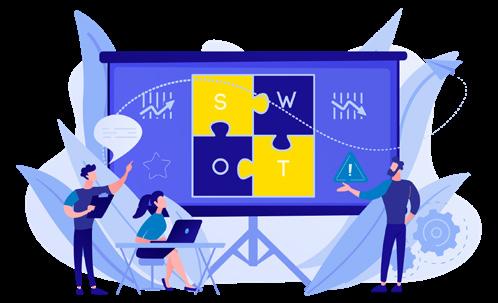
Optimize and improve your technology systems, ensuring they are operating at peak efficiency and effectively supporting your business goals.

Provide advanced analytics services, leveraging the latest technologies and techniques to help you turn your data into actionable insights.
Develop a digital strategy that aligns with your business objectives, enabling you to stay ahead of the curve in a rapidly changing digital landscape.
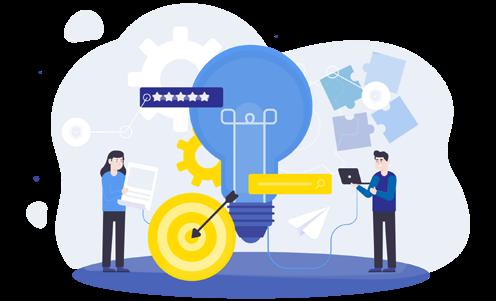


Industry experts shed light on the growing role of technology in driving ESG goals.
Sustainability has become a central concern for governments, businesses, and individuals. As we grapple with the escalating impacts of climate change, the need for innovative solutions is more pressing than ever. But does technology hold the key to a sustainable future? Technology's potential to drive sustainability is immense, offering new ways to reduce carbon footprints, optimize resource use, and create a more resilient planet. Cutting-edge technologies, from artificial intelligence to renewable energy systems, transform how we approach sustainability.
Technology is crucial in sustainability across various areas, including alternative energy sources, reducing carbon footprints, waste management, and green manufacturing. As ESG and environmental sustainability become increasingly vital for enterprise success, IT departments must recognize and understand their key role in this transformation.
“I believe there are two key aspects to consider. First, how can technology drive sustainability? And second, what is the sustainable aspect of technology itself? It’s essential to understand your current energy consumption and potential savings,” says Fred Lherault, CTO of Emerging Markets at Pure Storage.
He says there’s a clear need to measure and comprehend the sustainability cost of anything deployed in your data center. Improving sustainability through tech varies significantly by industry. For example, finding the shortest route to move goods between multiple sites can have a substantial impact in transportation. Simulating rather than building can greatly help in manufacturing, which is why many organizations are using digital twins.
“In some organizations, the benefits of such practices are very significant. For example, in financial services, enabling remote work instead of requiring all employees to come to the office daily has improved their Scope 3 emissions. Whether counted or not, daily employee commutes contribute to carbon emissions.”
Sujay Patil, Regional Director - MEA, Kissflow, says sustainability requires a concerted effort across departments and technology facilitates the necessary data collection, tracking, and integration. Without it, measuring and monitoring progress towards sustainability goals would be impossible given the scale and complexity at which modern enterprises operate.


Hoda Mansour,
Chief Operating Officer, APJ, ME&A, IFS


Joanna Mainguy, Sustainability Accelerator Director, AVEVA


Sujay Patil, Regional Director - MEA, Kissflow
In essence, sustainability and decarbonization revolve around achieving more with less and ensuring that we can forge a brighter future that respects our planet's limitations. The World Economic Forum estimates that digital technologies at scale will cut emissions by up to 20% by 2050.
"In other words, harnessing technological solutions is imperative to drive progress towards this better future. More and more industrial companies need to develop their saved and avoided CO²emission baseline and target. Digitalization will not only help them track and measure operational efficiency and agility, but also measurable
Fred Lherault, CTO of Emerging Markets, Pure Storage


Atul Rajput, Channel Partners & End Customers – EMEA at Axis Communications
gains and circularity. In fact, according to a World Economic Forum survey in 2022, four out of ten executives see digital technologies already making a positive impact on their sustainability goals," says Joanna Mainguy, Sustainability Accelerator Director at AVEVA.
According to Hoda Mansour, Chief Operating Officer, APJ, ME&A, IFS, sustainability, and technology can be seen as two sides of the same coin. Technology is a transformative force in helping organizations reduce waste, improve efficiency, and implement less carbon-intensive practices. “While challenges loom for businesses in ESG reporting, the
use of IoT, AI and ML enables efficient data collection, analysis and streamlining of business processes. These, in turn, help in effective measurement of ESG goals and its impact, thus ensuring a robust ESG reporting system,” she says.
IS SUSTAINABILITY BECOMING A PIVOTAL ROLE FOR CIOS?
In today's world, the use of technology is integral to modern business operations as it enhances efficiency and productivity, facilitates better decision-making, improves customer experience and enhances communication and collaboration.

One unintended result of the significant increase in the use of technology that underpins a business’s operation, is that it contributes to increasing an organization’s carbon footprint. As a result, the CIO will be tasked with taking a more holistic approach in selection of technology to use and vendors to partner with.
“This expectation on CIOs will only intensify due to a wave of new EU regulations such as the Corporate Sustainability Reporting Directive (CSRD) and CSD (Corporate Sustainability Due Diligence Directive), which are set to come into force in the next few years. This will increase the scrutiny on CIOs, and we will see them focus more on sustainable procurement and only sourcing from vendors that adhere to sustainable and ethical practices and produce energy-efficient products,” says Atul Rajput, Director, Channel Partners & End Customers – EMEA at Axis Communications.
Fred from Pure Storage agrees that CIOs have a significant role to play. “We’re already seeing this in action. Many of the largest organizations worldwide are being directed to reduce carbon emissions by 30% over the next three years. Consequently, every division, including IT, is tasked with this goal.”
CIOs can clearly take actions to contribute to this effort. For example, if your business operate a large fleet of trucks, IT might be a smaller contributor to overall carbon emissions compared to the entire business. However, with the increasing digitalization of organizations, IT operations
are becoming a larger part of the carbon footprint.
“CIOs can make a substantial impact by defining rules and ensuring they are measured. It's important to verify vendor claims about system efficiency and carbon costs. I recommend the approach of "trust but verify." Measure the actual power usage in your data center and require detailed information about the carbon costs. This will become part of your Scope 3 emissions, and sooner or later, you will need to report these to stakeholders who care about Scope 3 emissions,” Fred says.
Joanna from AVEVA says CIOs and chief sustainability officers should work hand in hand to provide solutions with double impact ‘IT for green; and ‘green IT’.
‘Green IT’ is crucial because CIOs are at the forefront of adopting and promoting green IT practices, such as applying green software principles and running more energy-efficient IT operations. When it comes to ‘IT for green’, for example, at the enterprise level, CIOs are responsible for integrating realtime data analytics that can track and report on sustainability metrics. This includes energy consumption, carbon footprint, and resource utilization. They are also enabling operations to achieve carbon reduction targets, for example, by implementing Internet of Things (IoT) devices and smart systems. These technologies help monitor and reduce waste, energy usage, and emissions. At the value chain level, CIOs can leverage technology to create more transparent and efficient chains, reducing overall environmental impact.
Hoda from IFS says greener technologies are emerging with a focus on reducing emissions and leveraging a circular economy. New technologies for carbon capture and storage stemming from the need to not only eliminate industrial commodities but to safely capture them, store and reuse them profitably to make other products. Use of green building materials are great eco-friendly alternatives to traditional construction materials that are more environmentally friendly and enhance the energy efficiency and overall sustainability of buildings. New advancements in eco-friendly construction include the use of recycled materials, 3-D printing construction designs, and renewable resources.
Joanna says across industries, there is a bold vision around using AI as decarbonization intelligence to track all emission sources, identify priorities, and formulating decarbonization strategies across scopes 1, 2 and 3 with a life-cycle perspective. It also could determine implementation pathways that balance technology impact and economic viability.
“With a Center of Excellence dedicated to artificial intelligence, we are increasingly focusing on how AI can be harnessed and deployed to drive sustainability. In the context of the ongoing energy transition, AI has a significant role to play in making technologies that may not currently be economically viable more cost-effective and scalable,” she wraps up.

Omar Akar, Regional Vice President, Middle East & Emerging Africa, Pure Storage, examines the environmental impact of AI.
AI can do more and more. Think of any topic and an AI tool can effortlessly generate an image or text. Yet the environmental impact of, say, generating an image by AI is often forgotten. For example, generating one image by AI consumes about the same amount of power as charging your mobile phone. A relevant fact when you consider that more and more organisations are betting on AI.
After all, training AI models requires huge amounts of data, and data centres are needed to store all this data. In fact, there are estimates that AI servers (in an average scenario) could consume 85 to 134 terawatt hours (Twh) of power annually by 2027. The message is clear: AI consumes a lot of energy and will therefore have a clear impact on the environment.
To create a useful AI model, a number of things are needed. These include training data, a stable internet connection, sufficient storage space and GPUs. Each component consumes energy to some extent, but the computing power required by GPUs consumes the most. According to
researchers at OpenAI, the amount of computing power used has been doubling every 3.4 months since 2012. This is a huge increase that is likely to continue in the near future, given the popularity of various AI applications. This increase in computing power is having an increasing impact on the environment. To illustrate, a study by the University of Massachusetts found that training popular AI models could lead to the emission of 284,000 kilograms of CO2 — as much as an average car driving 31 times around the world.
Organisations wishing to create an AI model should therefore carefully weigh the added value of the AI model against its environmental impact. In addition to this, the underlying infrastructure and the GPUs themselves need to become more (energy)-efficient.
A number of industries are important during the process for making an AI model: the data centre industry, the power sector, the semiconductor industry, telecom operators and the storage industry. To reduce AI's impact on the environment, steps need to be taken in each of these sectors to improve sustainability.
OMAR AKAR, Regional Vice President, CEE and META, Pure Storage

In the storage industry, concrete steps can be taken to reduce the environmental impact of AI. An example is all-flash storage solutions, which are significantly more energyefficient than traditional diskbased storage (HDD). In some cases, all-flash solutions can deliver an 85% reduction in energy consumption compared to HDD. Some vendors are even going beyond off-the-shelf SSDs and developing their own flash modules, allowing allflash arrays to communicate directly with flash storage. This makes it possible to maximise flash's capabilities and achieve even better performance, energy usage and efficiency i.e. data centres require less power, space and cooling. An additional advantage of all-flash solutions is that they are also better suited to running AI projects compared to HDD solutions. This is because linking AI models with data requires a storage solution that provides reliable and easy access to data across silos and applications at all times — this is often not possible with an HDD storage solution.
Data centres can take a sustainability leap with better, more efficient cooling techniques, but backup generators, for example ones which use fuel cells based on green hydrogen instead of diesel, can also be more sustainable. Of course, this hydrogen has to be generated 'green'; here lies a big role for the energy sector.
More energy from renewable
sources is needed because semiconductor manufacturers — especially of the GPUs that form the basis of many AI systems — are making their chips increasingly powerful, requiring more power to run. For instance, 25 years ago, a GPU contained one million transistors, was around 100 mm² in size and did not use that much power. Today, GPUs contain 14 billion transistors, are around 500mm² in size and consume 200W of power. So, there are more powerful GPUs, as a result they consume more energy. So, the semiconductor industry needs to bet a lot on energy efficiency — something that is already happening.
Telecom operators are essential for fast and reliable data exchange. This is relevant because the effectiveness of AI largely depends on data generated somewhere and then having to be transported to the data centre where the AI is running. For example, consider an AI application that needs input from sensors in a factory. Telecom operators can become more sustainable in various ways, such as by focusing on innovation or reducing emissions in the supply chain.
AI will have an impact on the environment, but initiatives such as switching to flash storage or improving data centre sustainability can reduce this impact. Every sector can take concrete steps towards a more sustainable course. This is already being done on a large scale, but it can always be done faster. It is important to keep investing to combat climate change!

Simon Morris, VP Solution Consulting at ServiceNow, on four lessons the cloud can teach us about adopting generative AI.
Generative AI (GenAI) has made the Arab Gulf region sit up and take notice. Even to non-technologists, AI is now making its promise of eventually surpassing the human capacity for initiative and creativity. As of December, the GCC GenAI market was projected to be worth US$430 million last year and rise to US$2 billion by 2030 — a CAGR of almost 25%. Drawing on estimates for overall regional AI spend, we can say that for every US$8 spent on AI in 2030, US$1 of it will be invested in GenAI. These figures suggest the hype is alive and well and will remain so for the foreseeable future. That means technology and business leaders have some decisions to make.
As they gather to make their plans, there is some good news for these stakeholders. They have a template to follow because GenAI is not the first technology to put decision makers in a bind, caught between risk management on one side and a runaway adoption trend on the other. Cloud computing was met with the same mix of enthusiasm and trepidation in the mid2000s, but flash forward two decades and it
saved countless businesses from ruin during the COVID pandemic. So let us learn some lessons from cloud migration and apply them to GenAI.
GenAI, like cloud computing before it, has an appeal that spans industries and scales. From the smallest retailer to the largest telecoms company, it has something to offer. Before cloud computing, any IT investment was in the form of significant capital-intensive outlays. But over time, the cloud drew in more and more businesses that recognized the advantages of more sustainable operational expenditure. Offered as a cloud-native service, GenAI has the potential to attract adopters in a similar way — as an opportunity to convert investments from CapEx to OpEx, while still gaining benefits like enhanced productivity and lower costs.
GenAI ingests data at a monumental rate. Its success depends upon it. But GCC regulators are clear on where, when, and how data can be
MORRIS VP Solution Consulting, ServiceNow

used. Privacy laws in Gulf states are consumer-centric, and ecommerce business models are now so common that PCI DSS will also apply in most cases. And then there are international standards such as GDPR. The question of data security is no longer abstract. It is a core business function. ServiceNow research in conjunction with Opinium shows data security to be a top concern among EMEA consumers when deciding whether or not to engage with a brand.
This focus on the safety of data reflects the early days of cloud adoption. Technology and business leaders dwelt long on the issue of trust and devised ways of amassing and analyzing the required data to add value while still reassuring customers of its safety. They resolved these issues primarily by partnering with providers that gave the right guarantees and commitments to give confidence to cloud adopters. GenAI’s adoption is in the nascent stages but lessons from cloud computing are clear. Data management and security must be at the top of the corporate agenda.
Cloud migrators had plans. They drew up roadmaps that included every prerequisite — skills, vendors, technologies — and every step taken. Some cloud adopters failed to accomplish their implementation goals while others were more successful. The difference between the two was having the right skills in play. It is well known that the GCC faces a shortage in STEM skills, especially in AI. But those AI skills will be critical in understanding data lifecycles, AI regulations, and other areas. Managing data for the purposes
of training a large-language model is a tricky proposition. But once the right resources are in place, organizations will experience smoother transitions.
When a trend takes hold, it is natural to expect a rapid time to value once you board the train. The hype cycle goes from initial anticipation to early adoption to widespread caution. That caution, however, can lead to some being the last to board, when all the good seats are taken. No organization wants to be in that position. A range of surveys suggest GenAI is in the early stages but that will not mean that there are no enterprises wringing their hands, anxious to move.
Just as for the cloud, it pays to be well-informed on GenAI because misinformation is bountiful. In its early days, the cloud was thought to be less cost-effective, less secure, and less reliable than legacy, on premises infrastructure. Today, this comparison has reversed itself. However, we are now in a position to evaluate GenAI by looking at its various proven use cases. It is capable of idea generation, taking part in brainstorming just as humans can. It can rate, rank, and recommend, summarizing huge data sources into useful reports and journals and giving advice backed by chains of logic, much as human consultants can do. GenAI can also generate content for us — draft emails, social posts, and responses to IT ticketing-service requests. Organizations should review the proven use cases to find out whether their individual objectives align with what has already been achieved.

Khalil Yazbeck, Business Development Manager – UAE, Kuwait, Qatar and Oman, Kingston Technology, analyses the impact of AI on DRAM market.
The AI revolution is transforming the Dynamic Random-Access Memory (DRAM) market – driving the development of solutions even more advanced, innovative, and effective than their predecessors. These advanced DRAM solutions, specifically designed for data centers and AI workloads, offer greater speed, bandwidth, capacity, energy efficiency, and reliability. They are essential for supporting the growing complexity and scale of AI applications.
In turn, these trends have ushered in a new reality where DRAM solutions are concerned: they must accommodate AI infrastructure to meet surging speed and scalability requirements – by various means:
Memory & data architectures - AI features are increasingly enabling systems to carry out their role and responsibilities. With greater data capture and processing points, volume and bandwidth needs are also increasing
exponentially. This means DRAM solutions are even more important for memory and data architectures.
Across industries, companies are proactively creating AI engines/models that require large amounts of data. The training process (Machine Learning) usually occurs on AI servers loaded with high-end Graphics Processing Units (GPUs) – and DRAM solutions are essential for accommodating GPUs with continuous data. In doing so, they help build the AI engine/ model capable of harnessing the technology’s speed and scalability. Regarding generative AI, extra DRAM capacity may also be needed for AI architectures to multitask smoothly.
Preserving confidentiality - In today’s increasingly AI-led world, organizations are strongly recommended not to relinquish confidential data without considering risks, especially regarding the Cloud. While Cloudbased AI solutions can be more cost-effective,
especially for Small & Medium Businesses, as they don’t need to invest in AI servers with high-end hardware, on-site AI engines/models could be more beneficial, particularly when it comes to keeping control of sensitive data.
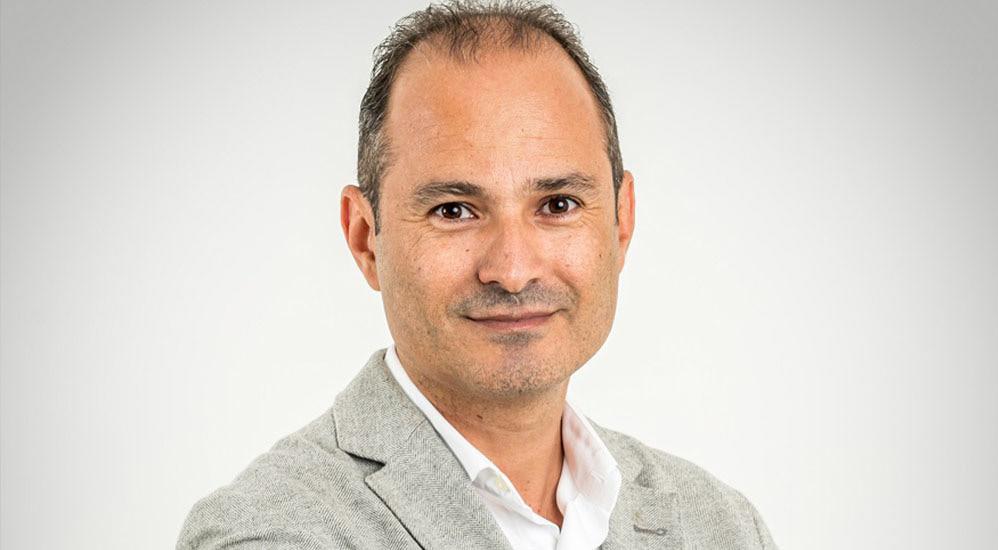
KHALIL YAZBECK, Business Development Manager Kingston Technology
This has created a massive demand for AI computation and memory bandwidth across industrial server farms and infrastructure – a demand almost certain to grow. As such, AI servers must be loaded with GPUs and large DRAM capacities to meet bandwidth and processing requirements. Crucially, DRAM solutions can accommodate such requirements.
Keeping pace with transformational change - AI applications cover many areas with core or specific functions. For example, Generative AI solutions are prudent for generating outputs based on how well they have been trained and how efficiently the AI engine/model has been built. They address issues or resolve problems logically and carry out data classification, clustering, trend analysis, anomaly detection, predictive modelling, and more.
However, an emerging challenge is boasting sufficient memory to keep pace with CPU performance. Faster, wider, and more efficient memory hierarchies are required to fill the performance gap between processor and memory. This has paved the way for new technology integration in the latest generation of servers, including High Bandwidth Memory (HBM) and Double Data Rate 5 Synchronous Dynamic Random-Access Memory (DDR5).
HBM and DDR5 are the
primary RAM components configured in AI servers to meet their high-performance and high-bandwidth demands – and both are viable options for meeting evolving speed and scalability requirements. With HBM, the vertical stacking and wide-interface architecture means this memory interface boasts vastly superior bandwidth compared to traditional DDR memories –suited to AI workloads requiring world-class processing capabilities and instantaneous access to large data sets. Additionally, the proximity of memory stacks and the GPU means data can be transferred with reduced latency, while HBM is also more efficient –consuming less power than DDR.
As for DDR5, higher bandwidth, reduced latency, and greater power efficiency are all outstanding features in comparison to DDR4 memory – the previous generation. Although HBM is faster and more responsive, DDR5 does offer several advancements that elevate traditional DRAM closer to HBM performance levels. While HBM is great for delivering optimized performance for AI applications, it is still quite limited when it comes to memory capacity and is not scalable, which are drawbacks compared to DDR5.
Ultimately, HBM and DDR5 both hold the keys to organizations and industries benefiting from AI’s influence on high-performance server memory. While their capabilities are highly soughtafter at present, both will continue evolving in the years ahead as their status as enablers of harnessing AI’s full potential becomes even more enviable.
Vishal Tinani, Head of Corporate at Mohamed Eid Al Suwaidi Advocates and Legal Consultants, explains why legal advisors are indispensable in guiding companies through ESG compliance and optimization.
The UAE’s commitment to fostering a resilient and diversified economy underscores the significance of ESG in sculpting corporate practices and stakeholder perspectives. Legal professionals are central to this process, providing essential guidance that ensures businesses meet regulatory demands and leverage these mandates to enhance operational and market performance.
UAE’s stringent environmental regulations, including Federal Law No. 24 of 1999, serve as the cornerstone for corporate environmental accountability, addressing everything from pollution control to resource conservation. Legal advisors play a crucial role in ensuring that businesses comply with these regulations, helping to avoid potential legal and financial penalties. Furthermore, they oversee Environmental Impact Assessments (EIA) as required by the UAE’s Ministry of Climate Change and Environment (MOCCAE) and ensure that new ventures adhere to established environmental protection standards. Though not universally mandated, ESG reporting is gaining traction, reflecting a broader global move toward transparency. Legal advisors play a critical
role in guiding through these reporting protocols, assisting companies in crafting disclosures that adhere to international standards like the Global Reporting Initiative (GRI) and the Sustainability Accounting Standards Board (SASB). This practice bolsters investor confidence and aligns with the broader global trend towards sustainable business practices.
With the rising prominence of ESG, the role of legal advisors becomes increasingly pivotal in navigating businesses through this intricate domain.
The increasing significance of ESG factors marks a transformative shift in business operations and global market evaluations. Understanding and navigating these changes requires adept handling of legalities, ensuring that organizations comply with regulatory demands, and effectively leveraging these mandates to enhance market position and operational efficiency.
Navigating the intricate landscape of environmental regulations across various jurisdictions is crucial for organizations. This

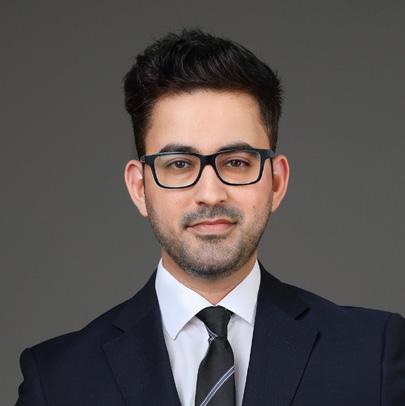
VISHAL TINANI, Head of Corporate at Mohamed Eid Al Suwaidi Advocates and Legal Consultants
encompasses managing legislation related to air and water pollution, waste management, and energy use. Legal insights are essential for formulating and reporting carbon emissions reduction strategies. Additionally, proficient legal management ensures adherence to environmental standards in multinational operations.
Fostering a culture of transparency and accountability is paramount in ESG governance. The legal role involves policy development, consulting with boards and executives, and promoting ethical business practices.
Moreover, legal expertise provides strategic insights that enable organizations to integrate sustainability into their business models and operations. By understanding and anticipating regulatory changes, identifying opportunities for sustainable practices, and mitigating legal risks, legalities empower organizations to effectively align their operations with sustainability goals.
This comprehensive approach includes:
• Sustainable Practice Advisory: Advising on sustainable business practices and the legal structuring of these initiatives.
• Corporate Strategy Integration: Assisting in aligning sustainability goals with overall corporate strategies.
• Certifications and Claims: Navigating the legal implications of sustainability certifications and environmental claims.
Another crucial aspect is disclosure and investor communications. With transparency increasingly mandated, understanding
legalities is essential for ensuring compliance with reporting standards. This includes adhering to frameworks such as the GRI, SASB, and TCFD, ensuring accurate disclosure of ESG practices in investor communications and annual reports, and fostering a sense of responsibility and accountability.
Understanding legalities through the lens of ESG also helps navigate complex regulatory environments and enhances a company’s market value. This involves avoiding legal pitfalls related to environmental regulations, labor laws, and corporate governance requirements. Failure to comply with these regulations can result in fines, legal actions, and reputational damage. By proactively addressing these legal requirements, companies can mitigate risks and maintain a strong legal standing, thereby safeguarding their market value.
Integrating ESG principles into the UAE’s IT sector is essential for adhering to global standards, fostering environmentally responsible growth, and promoting social conscientiousness. By embracing these principles, UAE IT companies not only enhance their reputation and competitiveness but also contribute to the longterm sustainability and stability of the sector. However, this strategic integration is met with challenges, including high initial costs, measurement complexities, stakeholder alignment issues, and barriers to corporate culture integration. Addressing these challenges demands collaborative efforts from both public and
private stakeholders to incentivize ESG adoption, bolster capacity, and promote collaboration. By overcoming these hurdles, the UAE’s IT sector can effectively drive sustainable development and innovation, solidifying its position as a leader in the global market.
CAN ALIGNING WITH ESG PRINCIPLES INFLUENCE INVESTMENT AND FINANCING OPPORTUNITIES FOR IT COMPANIES IN THE UAE?
ESG principles are pivotal in augmenting the competitiveness, cost efficiencies, and risk mitigation strategies of companies, particularly within the UAE market. ESG analysis comprehensively evaluates various operational facets, including energy efficiency, sustainable practices, data security, privacy protection, and ethical technology employment. Aligning with ESG principles such as energy efficiency, sustainable resource management, and ethical technology utilization enhances the organization’s ability to meet the requirements of smart city and government digitalization initiatives. This alignment increases the company’s competitiveness in securing tenders over competitors that may not prioritize similar considerations.
WHAT INITIAL COSTS ARE ASSOCIATED WITH INTEGRATING ESG PRINCIPLES, AND HOW CAN COMPANIES JUSTIFY THESE INVESTMENTS?
Integrating ESG principles into corporate strategies demands substantial initial investments, which businesses must carefully justify amid escalating global emphasis on sustainability and regulatory
mandates.
To minimize environmental footprints, companies need significant capital to upgrade existing infrastructure and systems. This entails adopting renewable energy sources, installing energy-efficient devices, and deploying advanced waste reduction technologies.
While the initial costs of ESG integration are substantial, businesses can rationalize these investments by recognizing the long-term advantages. Investing in renewable energy sources, transparent reporting on social and environmental performance, ethical supply chain practices, community development projects, and innovative, eco-friendly products and services enables companies to justify their ESG investment.
WHY IS CYBERSECURITY IMPORTANT TO ESG FRAMEWORKS? CAN YOU DESCRIBE THE PROCESS OF INTEGRATING CYBER INSURANCE INTO A COMPANY’S OVERALL RISK MANAGEMENT STRATEGY?
Within ESG frameworks, cybersecurity emerges as a pivotal factor, serving as a linchpin for safeguarding corporate integrity and compliance in today’s digitally interconnected landscape. Cyber threats pose substantial risks across all three dimensions of ESG—environmental, social, and governance— underscoring the necessity of robust cybersecurity measures. Integration of cyber insurance into a company’s overall risk management strategy is pivotal in fortifying its ESG commitments. This process entails several key steps: Risk Assessment: Organizations must conduct
regular evaluations of their exposure to cyber risks, considering the nature of their operations and the potential impact on ESG objectives.
Disclosure in ESG Reports: Transparent disclosure of cyber risks and mitigation strategies in ESG reports is imperative. This provides stakeholders, including investors and regulators, with insight into the company’s proactive approach to managing cyber risks.
Alignment with ESG Commitments: Cyber insurance policies should align with the company’s ESG commitments, offering comprehensive coverage for risks that could impact social and governance objectives. This includes coverage for data breaches, privacy violations, regulatory fines, and legal liabilities.
Regular Review and Adjustment: Companies should conduct regular reviews of their cyber insurance policies to ensure alignment with evolving cyber threats and changes in ESG priorities. This may involve adjusting coverage limits, revising policy terms, or exploring new insurance options.
By integrating cyber insurance into their risk management strategies and transparently disclosing these efforts in ESG reports, companies can bolster their resilience, protect stakeholder interests, and uphold their commitment to ESG principles. This proactive approach not only mitigates potential financial losses from cyber incidents but also enhances trust and confidence among stakeholders, reinforcing the company’s position as a responsible corporate citizen in an increasingly digital world.
Ed Stonestreet, Managing Director of FeatureMind, discusses how the digital services agency is fueling the transformation of the retail industry.
FeatureMind has been around since 2018, and we have over 100 developers in Izmir and more than 25 developers in Abuja. We are building the capability to support our customers across a wide technology spectrum.
We are not a product company, but a systems integrator. Our whole purpose is to bridge the gap between what technologies are capable of and what businesses want to achieve. The job of a systems integrator is often a much-maligned or misunderstood term.
We first think about the strategy: what is it that a business wants to achieve, and how can it be delivered? Every conversation starts with the why. Why do you want to do something? Then, what is it that you want to do? When it comes to translating the what into the how, that's where we add the most value, because we can translate that into what technology can offer. More often than not, we aim to make better use of the
technology you've already invested in. This isn't about buying the next shiny new thing.
People have invested in technology for years but often don't leverage what they already have. We'll likely delve deeper into this, but for now, let's address the buzzword of the day: AI. Everyone wants AI, and boards are asking their C-suite, "What's our AI strategy?" The truth is, you don't need a separate AI strategy—AI is already embedded in many of the products you're using. AI needs a specific use case to be truly effective.
As John F. Kennedy said, "Ask not what your country can do for you; ask what you can do for your country." Similarly, I would say, "Ask not what AI can do for you; ask what you can do with AI." AI won't transform anything unless you have a clear use case driving the desired outcome.
In terms of our approach, we are technologyagnostic. We work across various platforms


ED STONESTREET, Managing Director, FeatureMind
like Salesforce, MuleSoft, and Shopify. Whether it's in the retail store, the back office, or digital commerce, we support the entire environment.
CAN YOU SHARE THREE USE CASES FOR THE SERVICES AND SOLUTIONS OFFERED BY FEATUREMIND?
I think it's really important to recognize that what works in one area or region cannot simply be copied and pasted into another region, particularly here. For instance, when you think about the UAE, it's essentially one urban area. This means it doesn't have issues with three-day delivery or reaching someone who lives in a remote area. Delivery here, conceptually, is a matter of minutes, not hours or days.
Also, the business setup here, with many brands operating as franchises, means there's a different way they manage operations. You're not necessarily leveraging what the brand uses in Europe, but there is a minimum standard you must reach to win the business as a franchisee.
When building from the ground up to mirror an amazing experience already created in Asia, Europe, or America, brands often want to differentiate themselves for this region. The use of the mall as a real cornerstone of retail is absolutely critical here, much more so than it would be in the UK, France, or Singapore.
Having the mall as the cornerstone and leveraging that to build digital around it is key. Use cases might involve driving an in-store experience that links to the overall digital experience, connects back to the app, integrates with the call center, and ties into the website— ultimately creating a seamless customer journey.
A colleague of mine recently walked through one of the biggest
malls here, and out of 40 brand stores, only one offered clickand-collect. This isn't some new, crazy technology—it's basic omnichannel functionality, and yet many aren't implementing it because it's not easy.
The second use case is encapsulated by a tagline I often use: "Free the data." No loyalty program can work without data. This seems self-evident, but very few companies can actually access the data needed for such programs. So, we focus on data architecture.
You need to take data out of silos and make it available. By freeing the data, you can execute your strategy. Trying to do it the other way around will lead to failure. You can't deliver a strategy without the data. For me, there's a clear sequence to follow: map the data, ensure it's in the right place, and then leverage it to drive AI. AI without data is pointless.
Loyalty and marketing campaigns, segmentation, and in-store experiences all stem from having the right data in the right place. That's the second use case we've discussed. The third is really embracing what an app should be.
When we think about an app, we typically consider what's on our phones, such as banking and other personal activities. However, an app is also an essential employee tool. For example, when opening the store in the morning, an employee needs to go through a checklist of tasks. Why not have that in the app? The same app can be used to know who your customers are, log a sale, and manage customer service interactions.
It's about putting the power into the hands of the employees because there's no way around it.

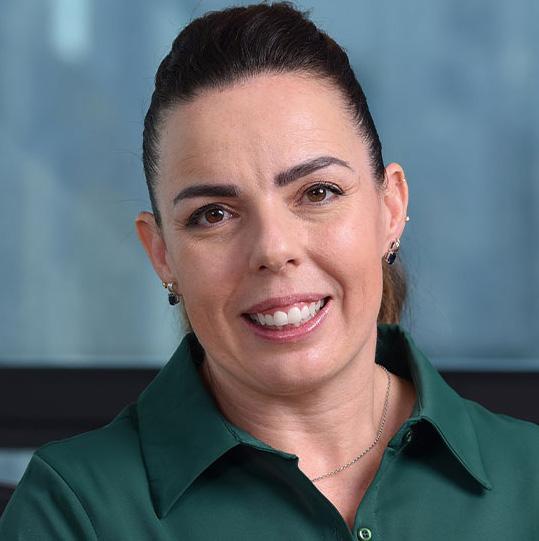
PROVEN 360 appoints Leandra Meintjes as the new CEO
PROVEN 360 has appointed Leandra Meintjes as CEO at PROVEN 360. Her outstanding contribution as a strategic leader will foster innovation and nurture a high-performance team.
In her new role as CEO, Leandra will steer PROVEN 360 towards continued success and growth through networking and client acquisition. She will be responsible for setting and executing strategic initiatives that align with the company’s vision and values.
Leandra joined PROVEN Arabia in 2020 to drive the marketing initiatives for PROVEN, PROVEN Consult, and PROVEN Solution. In 2022, PROVEN 360 was launched with just two team members. Over the last two years, Leandra has successfully expanded the team to 18 employees, which now manages a portfolio of 20 clients. Additionally, Leandra played a pivotal role in transforming the PROVEN Solution brand into a leading technology company in the region.
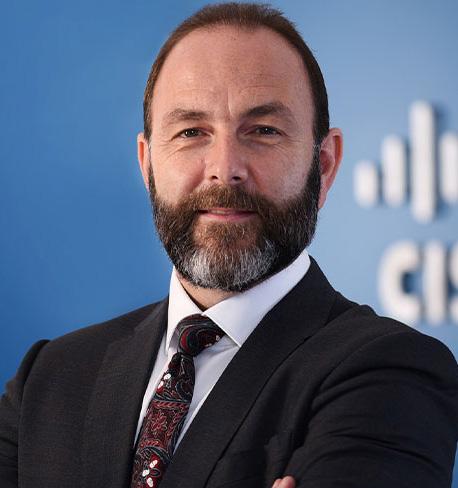
Cisco Appoints David Meads to Lead Middle East, Africa, Romania, and CIS
Cisco announced that it has appointed David Meads as Vice President for the Middle East, Africa, Romania, and Commonwealth of Independent States (CIS). He succeeds Reem Asaad who drove Cisco’s business in the region for more than four years.
In this role, Meads will be responsible for Cisco’s strategy and commercial operations, with a focus on empowering customers and partners to harness the full potential of digital technologies for economic growth and societal benefit. He will continue in his current capacity as Chief Executive of Cisco in the UK and Ireland until the end of Cisco’s fiscal year (July 2024).
With three decades of experience across multiple business functions and geographies, including the Middle East and Africa, Meads brings deep industry and technology expertise to the role. Meads began his career with Cisco in 1996 and has held various leadership positions, including Chief Executive of Cisco UK & Ireland since 2019.
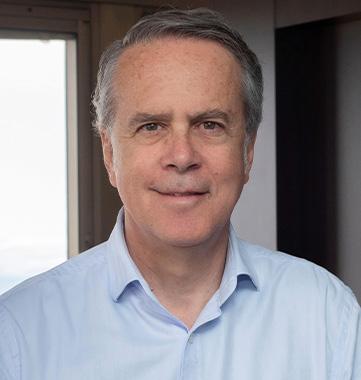
NetApp appoints José Manuel Petisco as Vice President for EEMI
NetApp appoints José Manuel Petisco as VP for the EEMI region, covering Eastern Europe, Middle East & Africa, Spain, Portugal, and Latin America. With over 30 years of IT experience, Petisco previously served as General Manager of NetApp Iberia and Cloud Director for Ibero-America. Prior to joining NetApp, Petisco had a long career at Cisco, where he held various management positions in Sales, Marketing, and Business Development, both in Spain and Europe, for 19 years. His extensive experience also includes positions of responsibility at companies such as 3Com, Alcatel, Ericsson, and Veritas. In his new role, Petisco will oversee the implementation of NetApp’s global strategy in key regions for the company, focusing on digital transformation and the adoption of new platforms with intelligent data infrastructures for private and public cloud environments.

